Gold Diggers and Cliff Dwellers
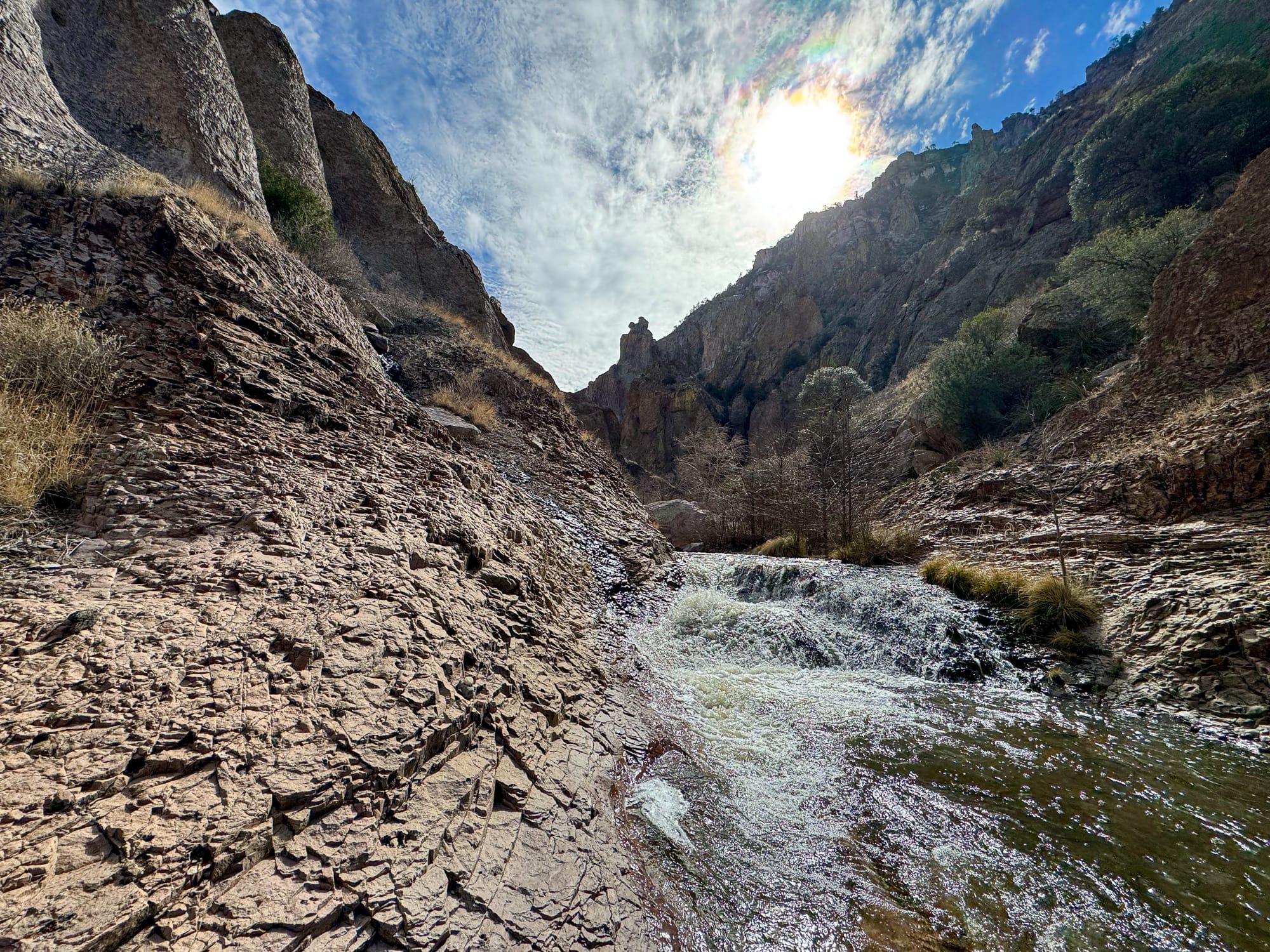
After we finally picked up our new trailer in Colorado, we decided to postpone our West coast trip/ Honeymoon due to the unpredictable weather in California and to explore the South of New Mexico instead. More precisely, the rugged wilderness of the Gila National Forest, home of the Gila monster, its surrounding hot springs, and former mining towns.
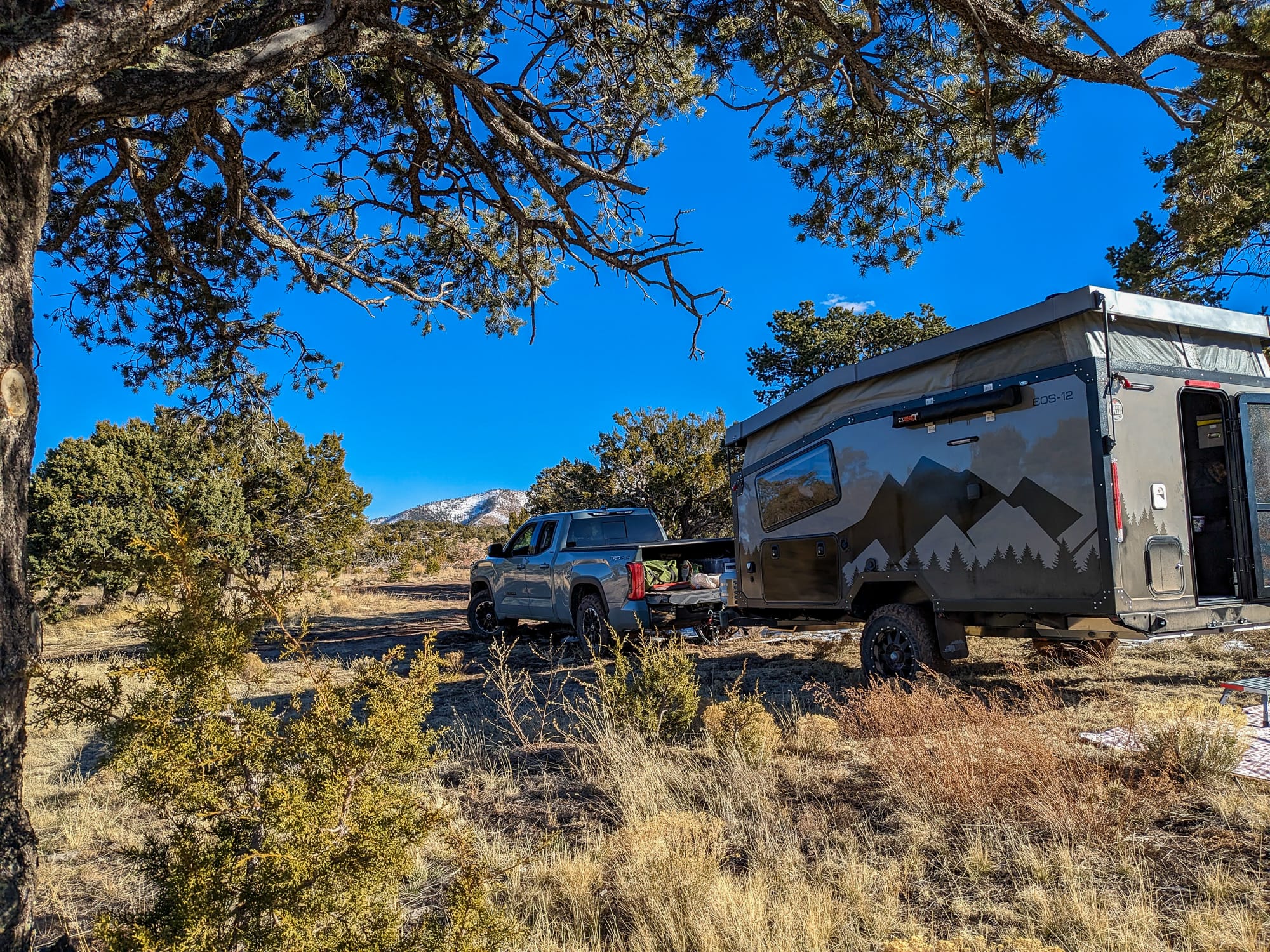
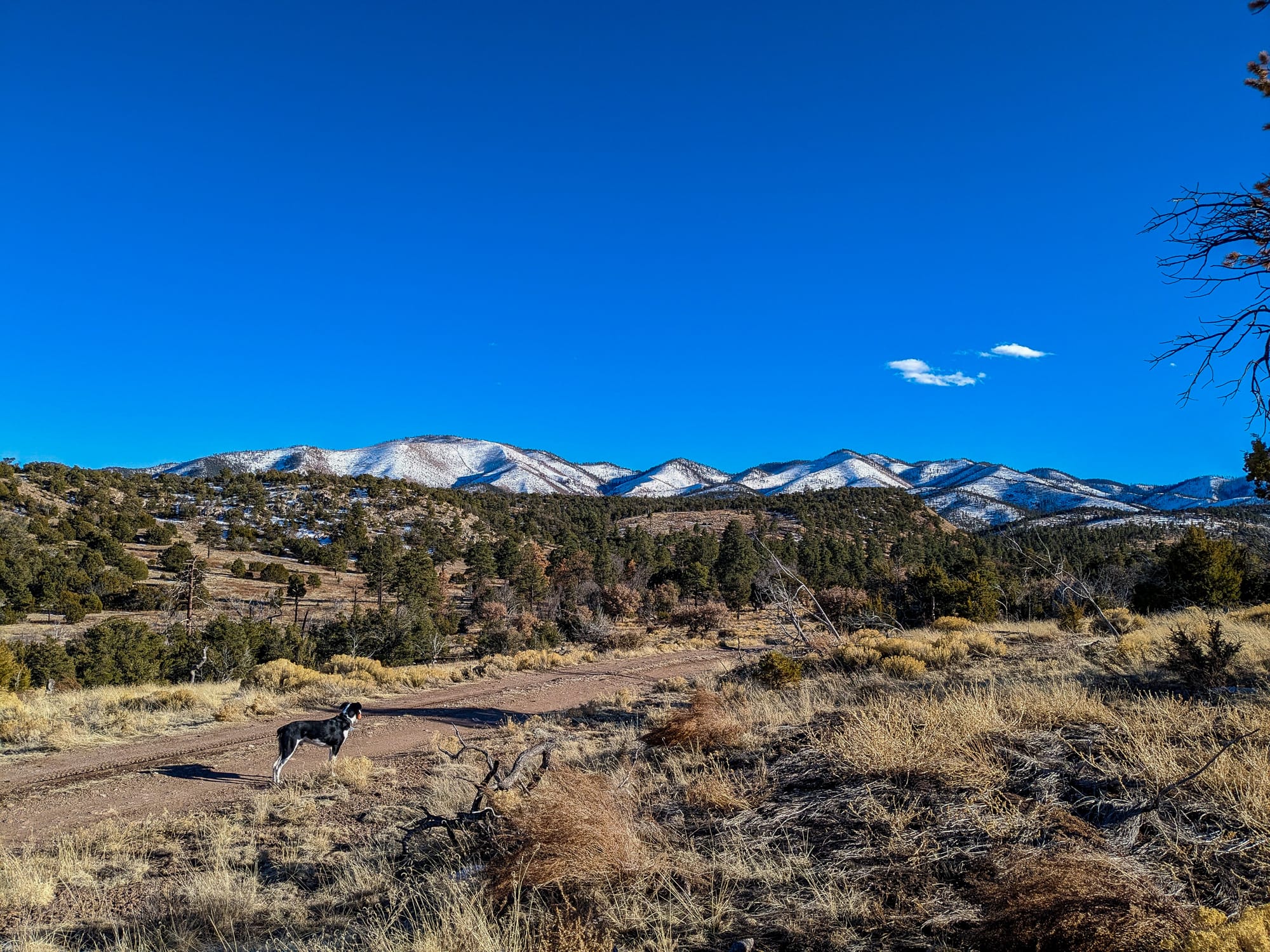
Camped below Mt. Withington outside of Magdelena
Our first night was spent outside of Magdalena after which we made our way to Mineral Creek near Alma, past the tomb of Sergeant James Cooney. Cooney had discovered silver and gold reserves in the Mogollon mountains but kept this secret until he was discharged in 1876. His successful mining endeavor ended abruptly, when he was killed in an attack by the native Apache tribe. The area around the Gila NF has been known to be rich in various minerals and precious metals since the founding of Silver City in 1870. Billy The Kid fans might recognize Silver City as one of his areas of operation. Today we can still get an idea of what life was like back then, in the times of the gold rush, thanks to the abundance of abandoned mines and ghost towns, such as Pinos Altos, Mogollon, Kingston, and many more.
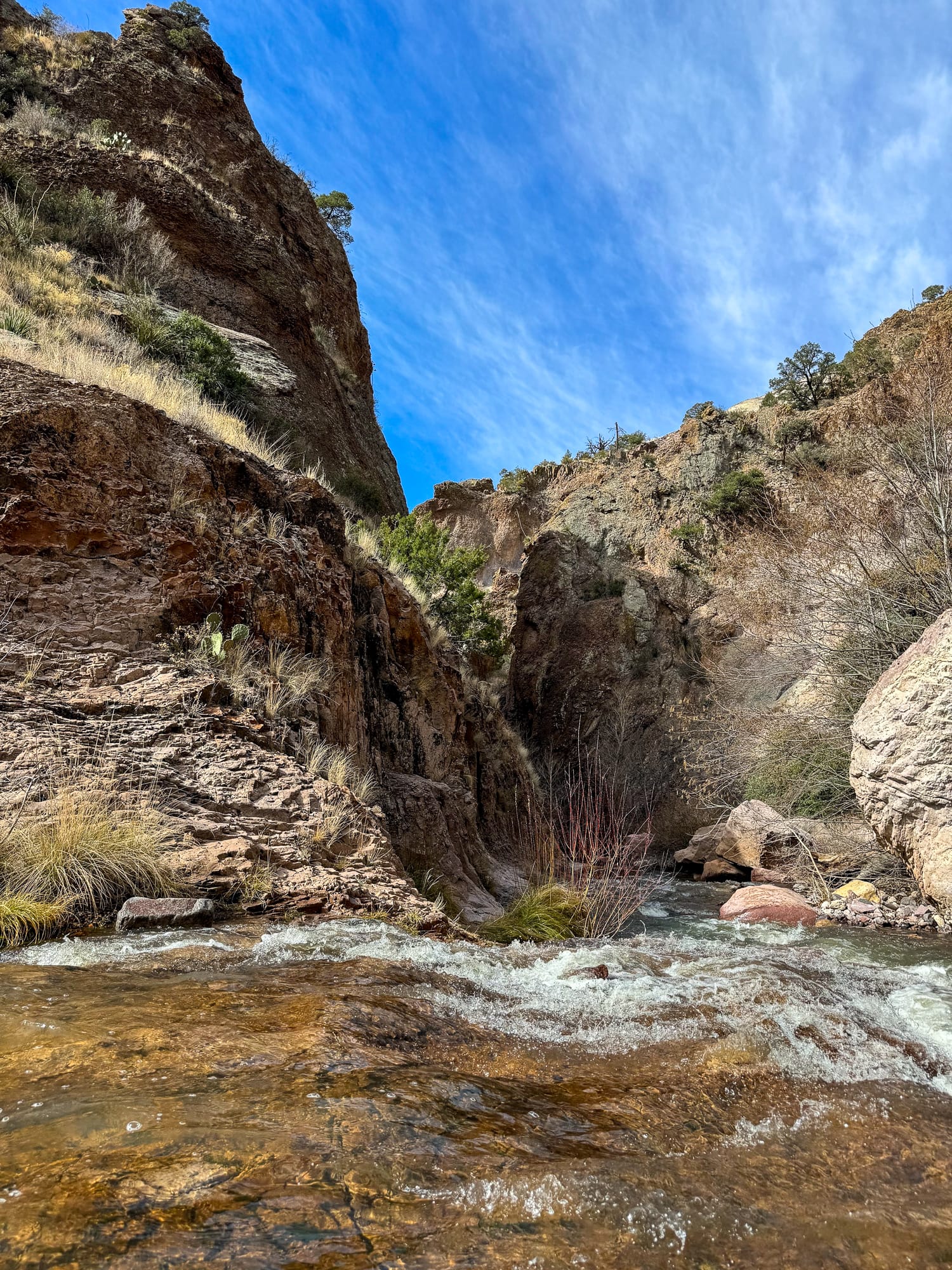
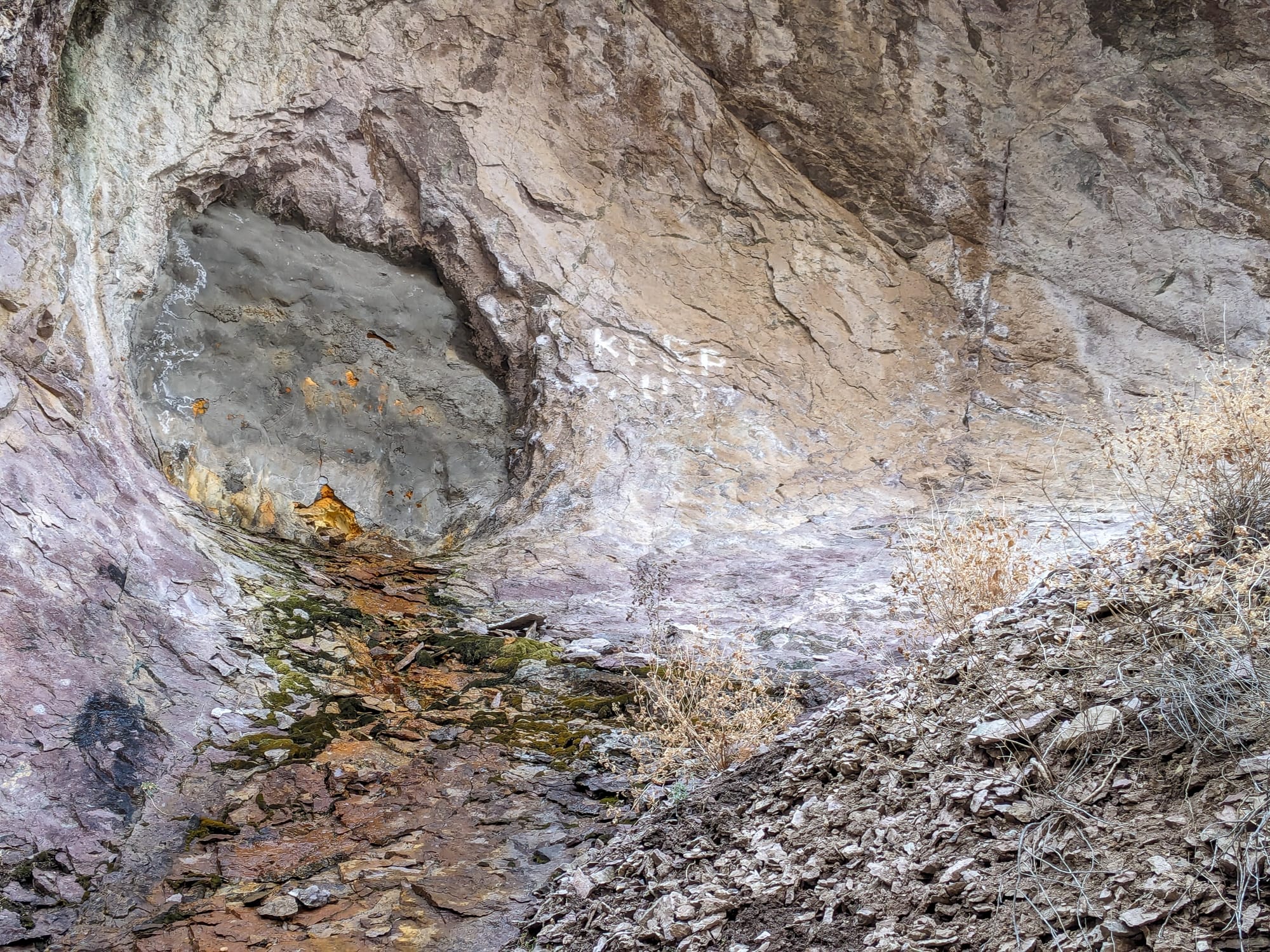
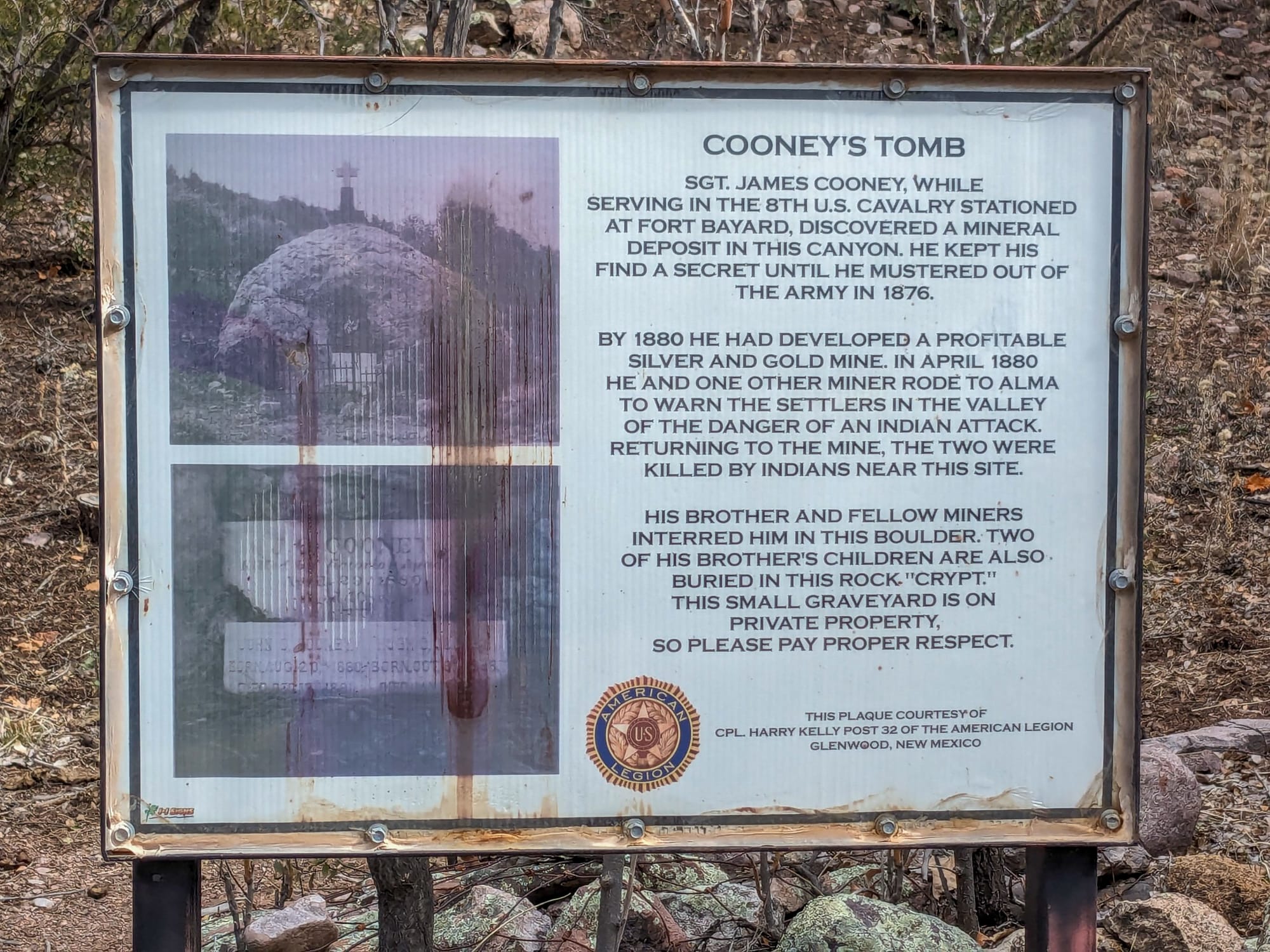
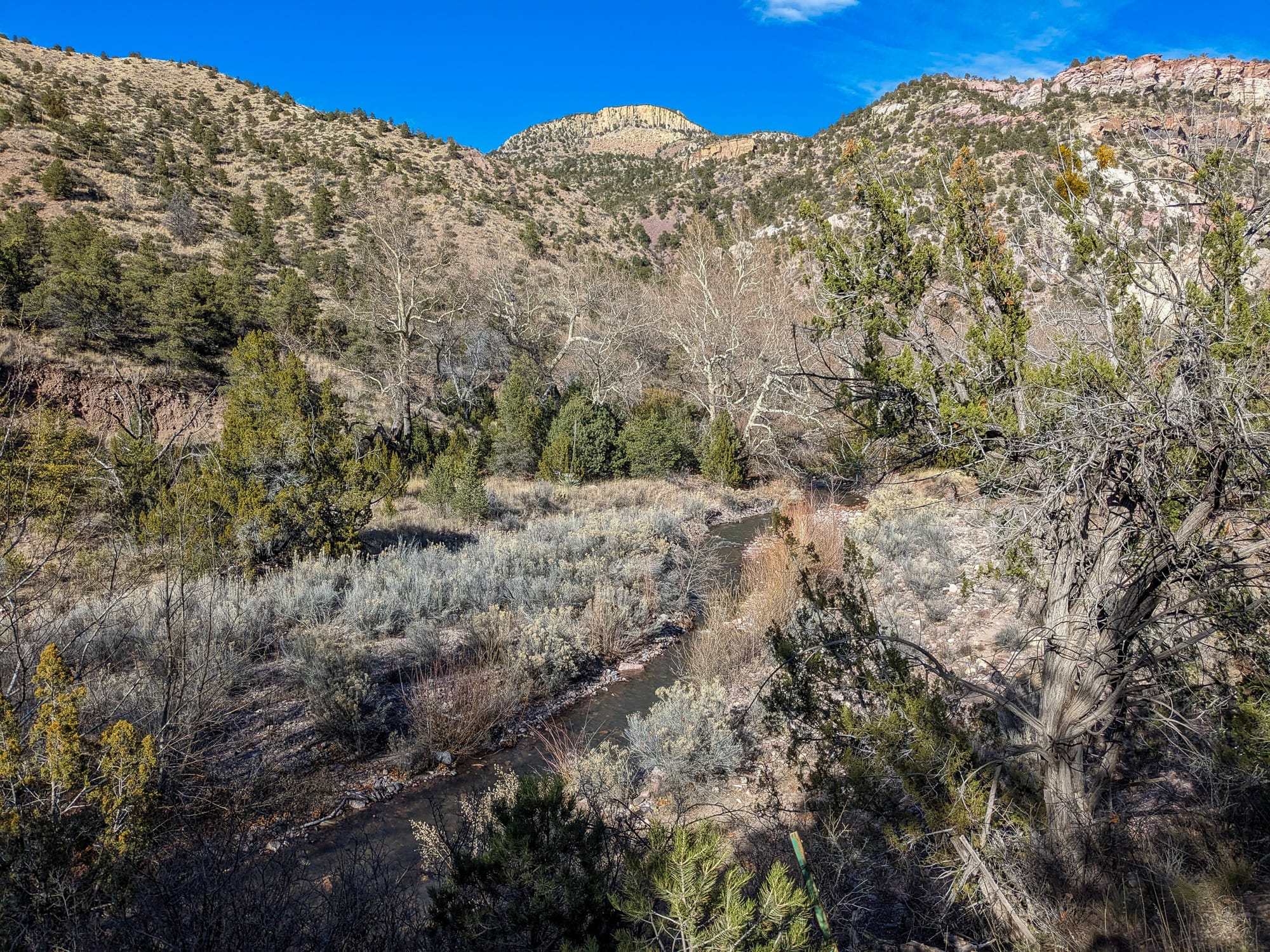
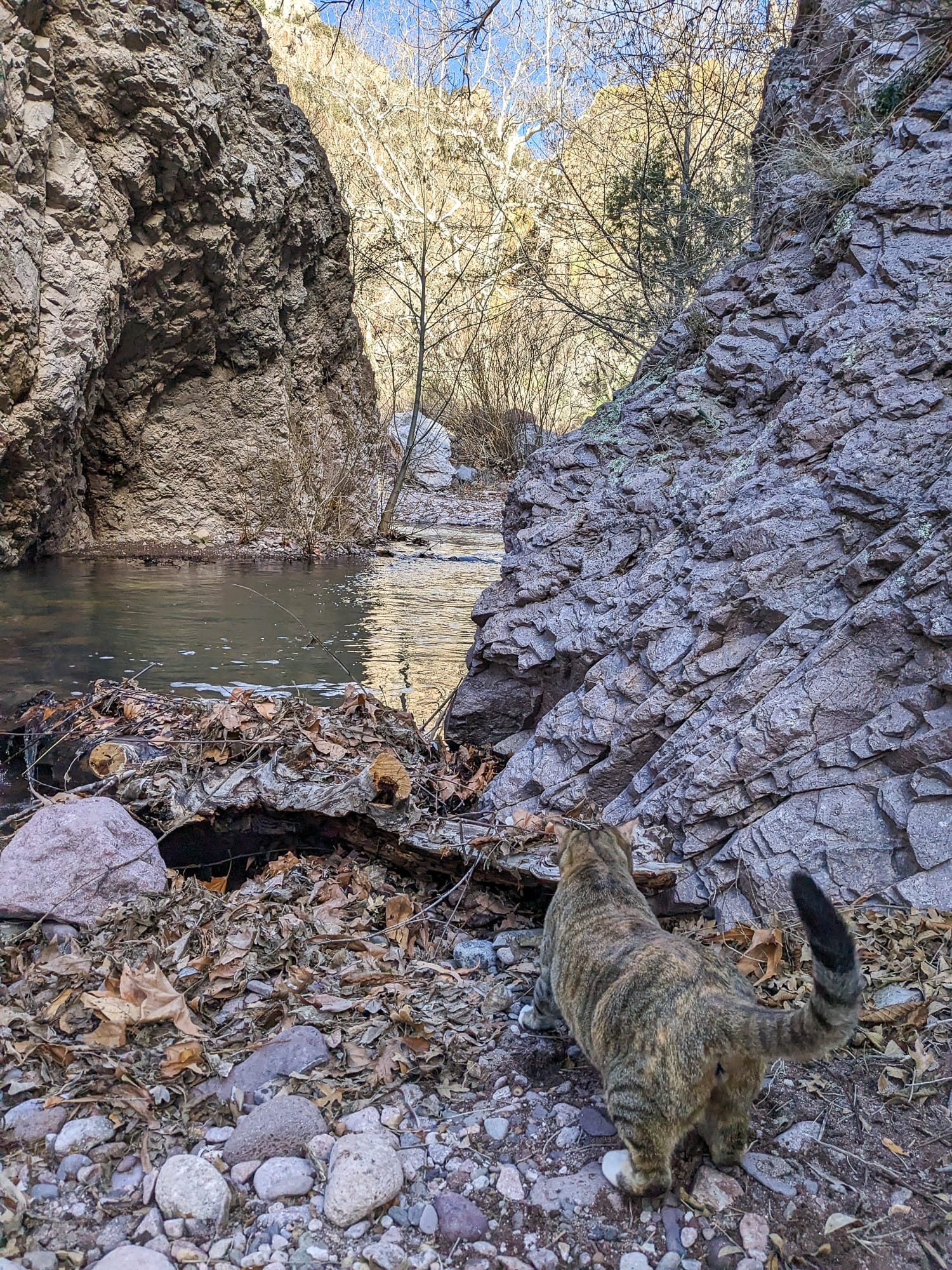
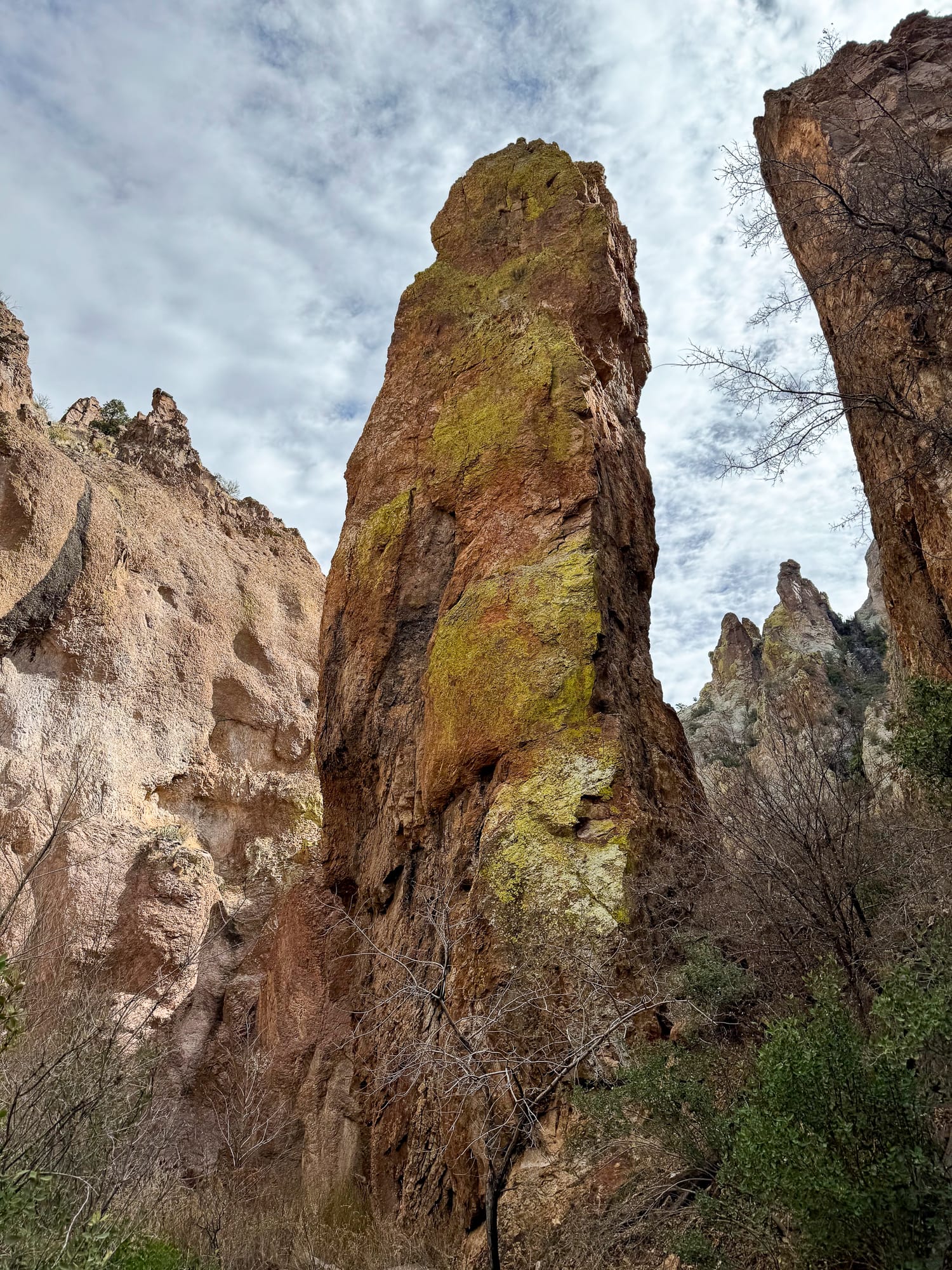
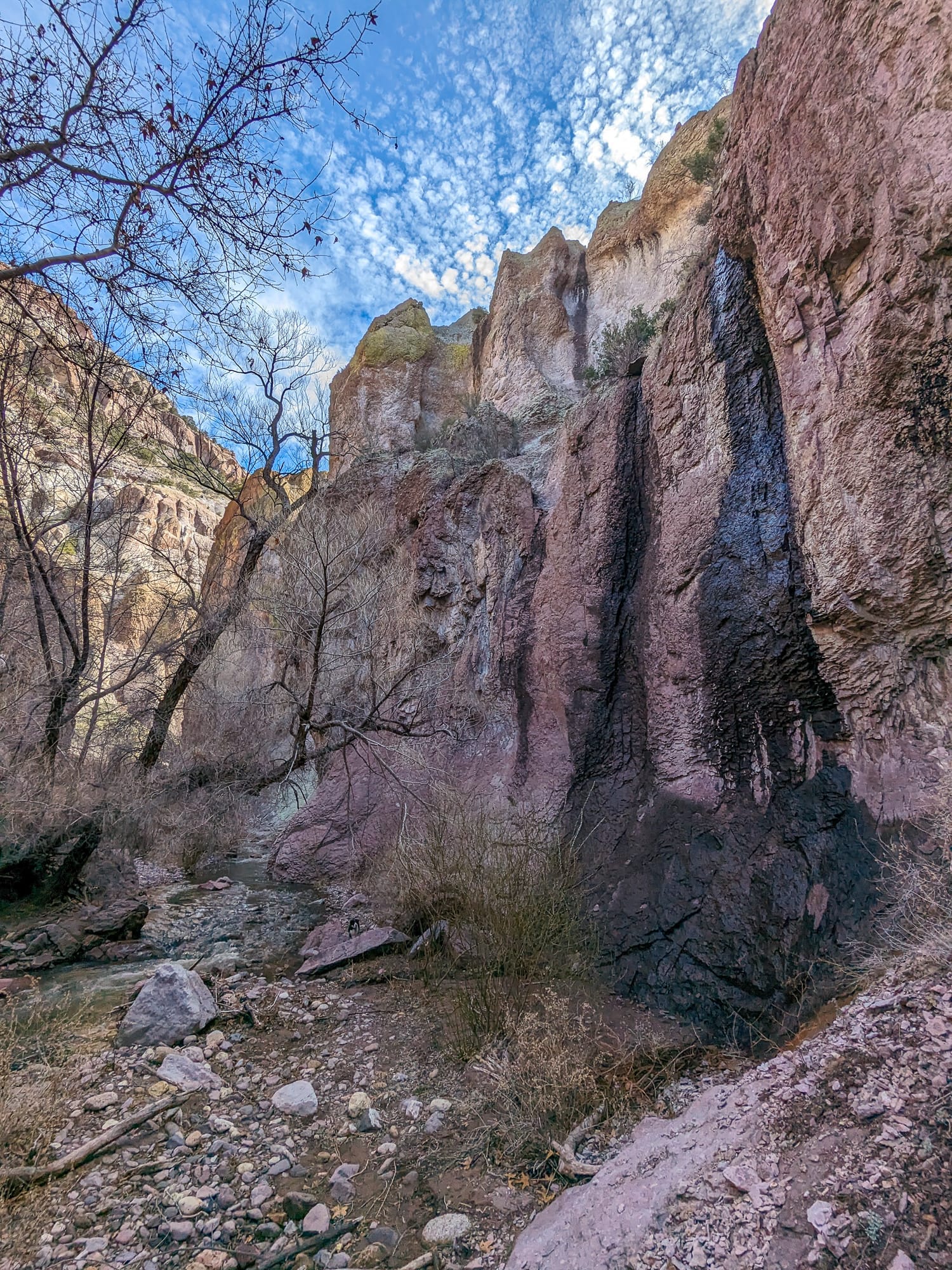
Mineral Creek area
We attempted a very cold, wet, partly rugged, and steep hike along Mineral Creek, which required many river crossings. At this time of year it is fair to describe the flowing creek as a river, as the water was all the way up to our knees. The canyon itself is beautiful and we even came upon a now closed off entrance to a former mine. How exciting! As it would turn out, there are still many of those mine shafts around and some areas even have an active federal mining claim posted. However, we were in need of warming up and left for our third campsite at the San Francisco Hot springs south of Pleasanton. We found a remote spot at the edge of the canyon and hiked down Box Canyon the following morning in search of wild hot springs. The hike from the official parking lot is well maintained and very pretty in the spring. Getting to the actual hot spring required, - you guessed it- another river crossing. We were lucky to have it all to ourselves, as it was a Monday, and if you don't mind swimming spiders, you get quite a view while soaking.
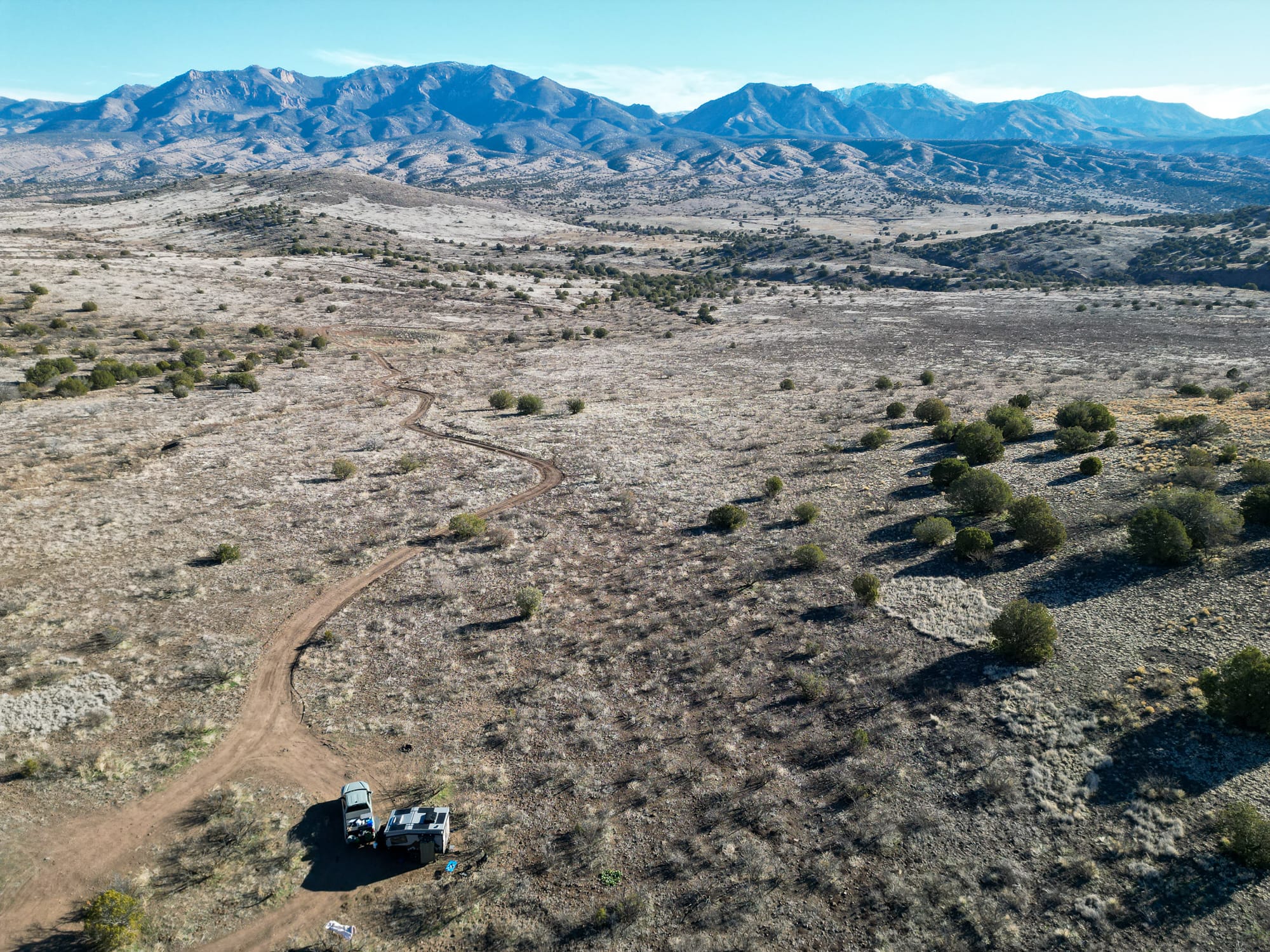
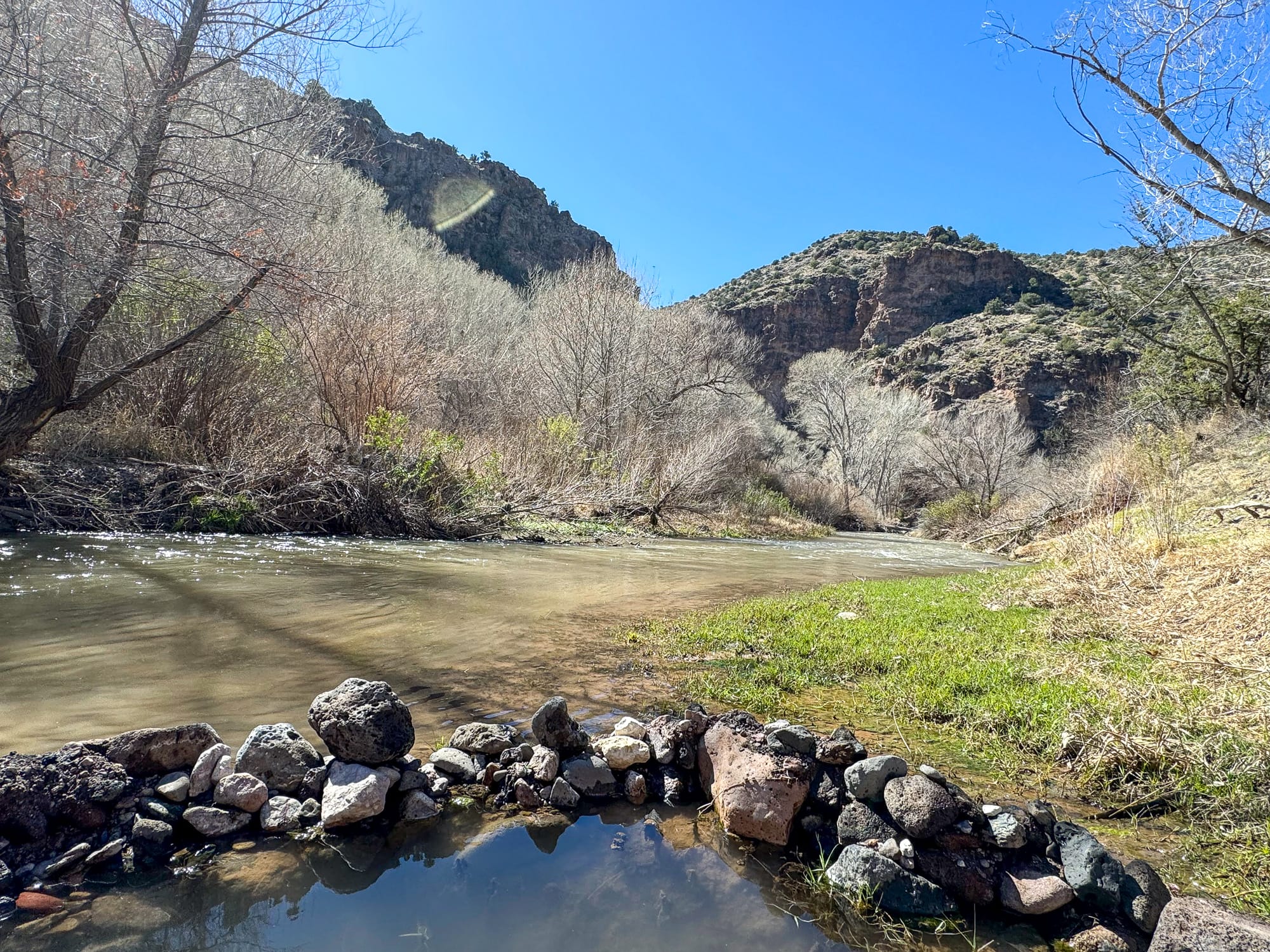
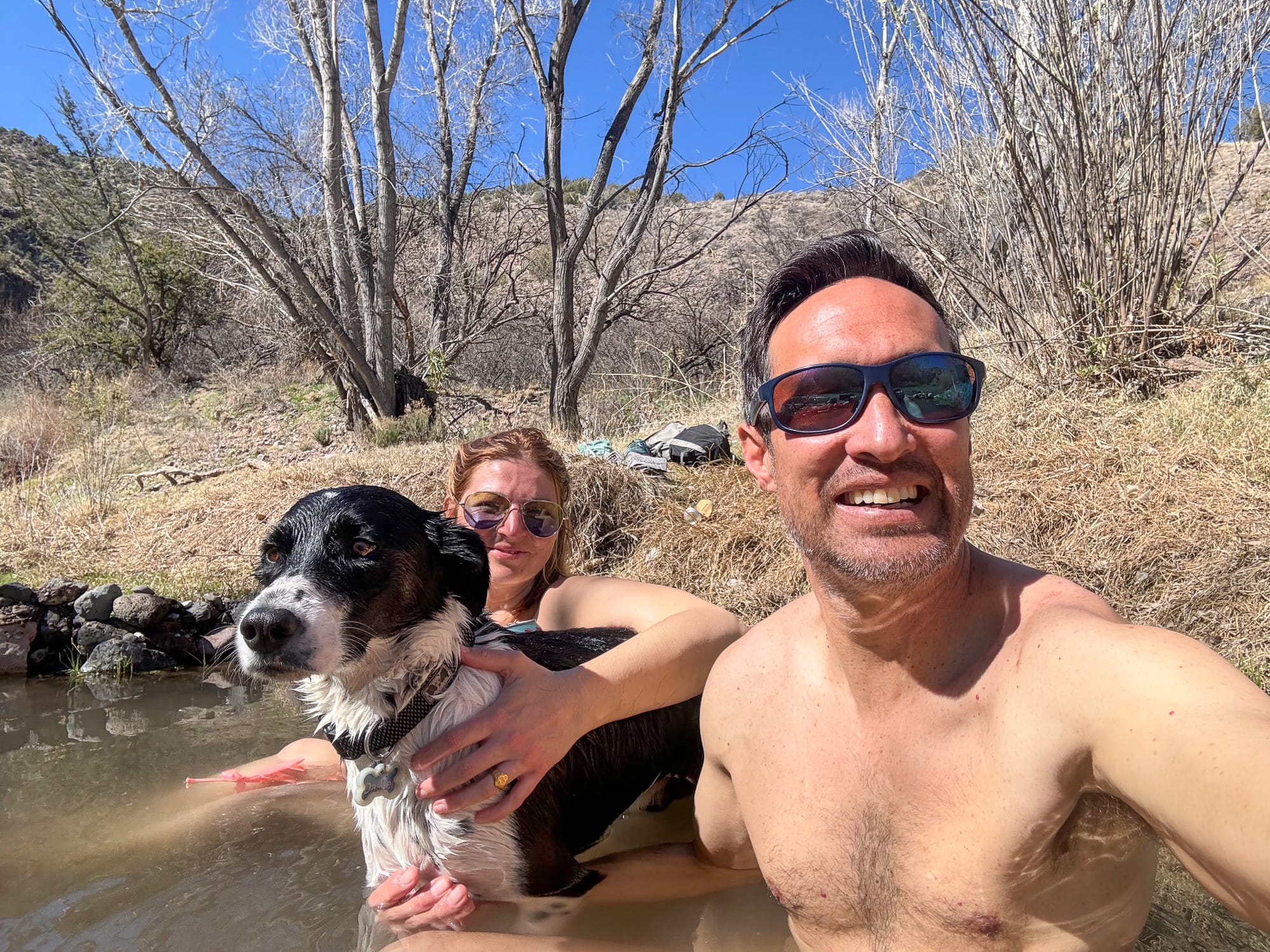
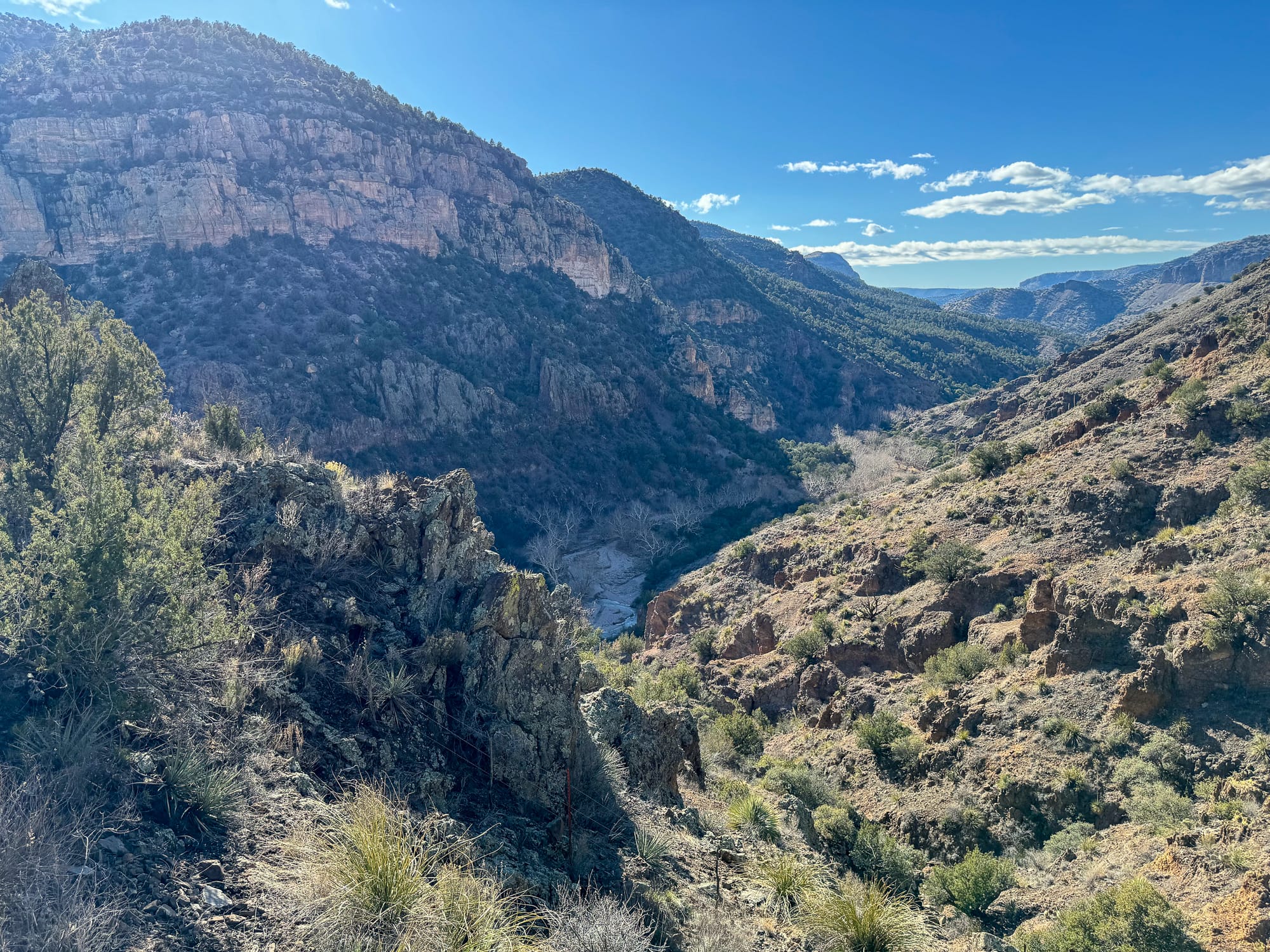
San Francisco hot springs and surround area
The next day, we passed through the infamous Silver City, a now quirky town, filled with breweries, coffee shops, art galleries, and co-ops. While the Big Ditch doesn't look like much more than a common canal, it actually used to be Silver City's main street, that was washed away in a freak flood in 1895. The sunken canal was eventually transformed into a beautiful public park, with an impressive community made mural consisting of ceramic tiles to remind us of the event that changed the city.
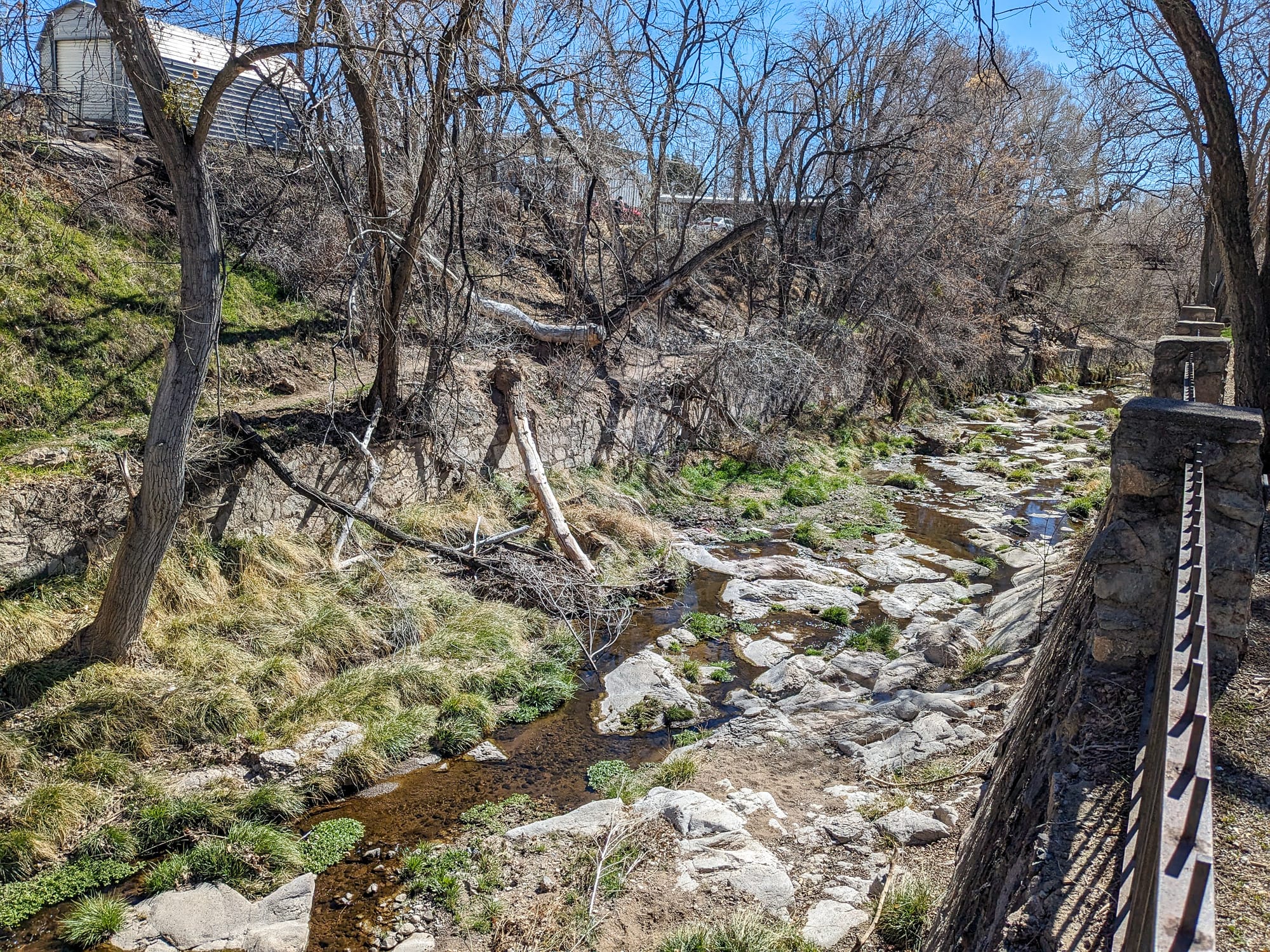
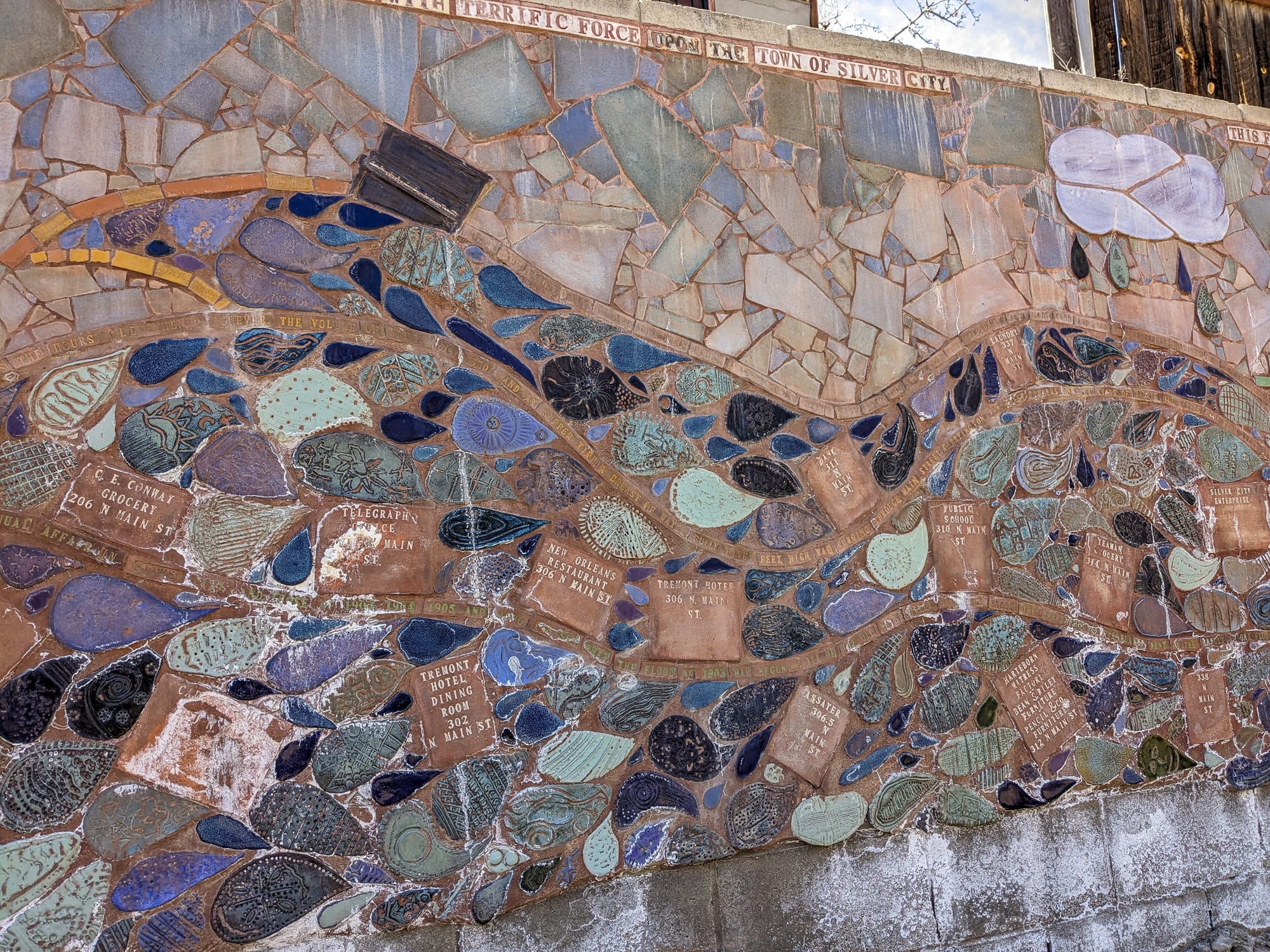
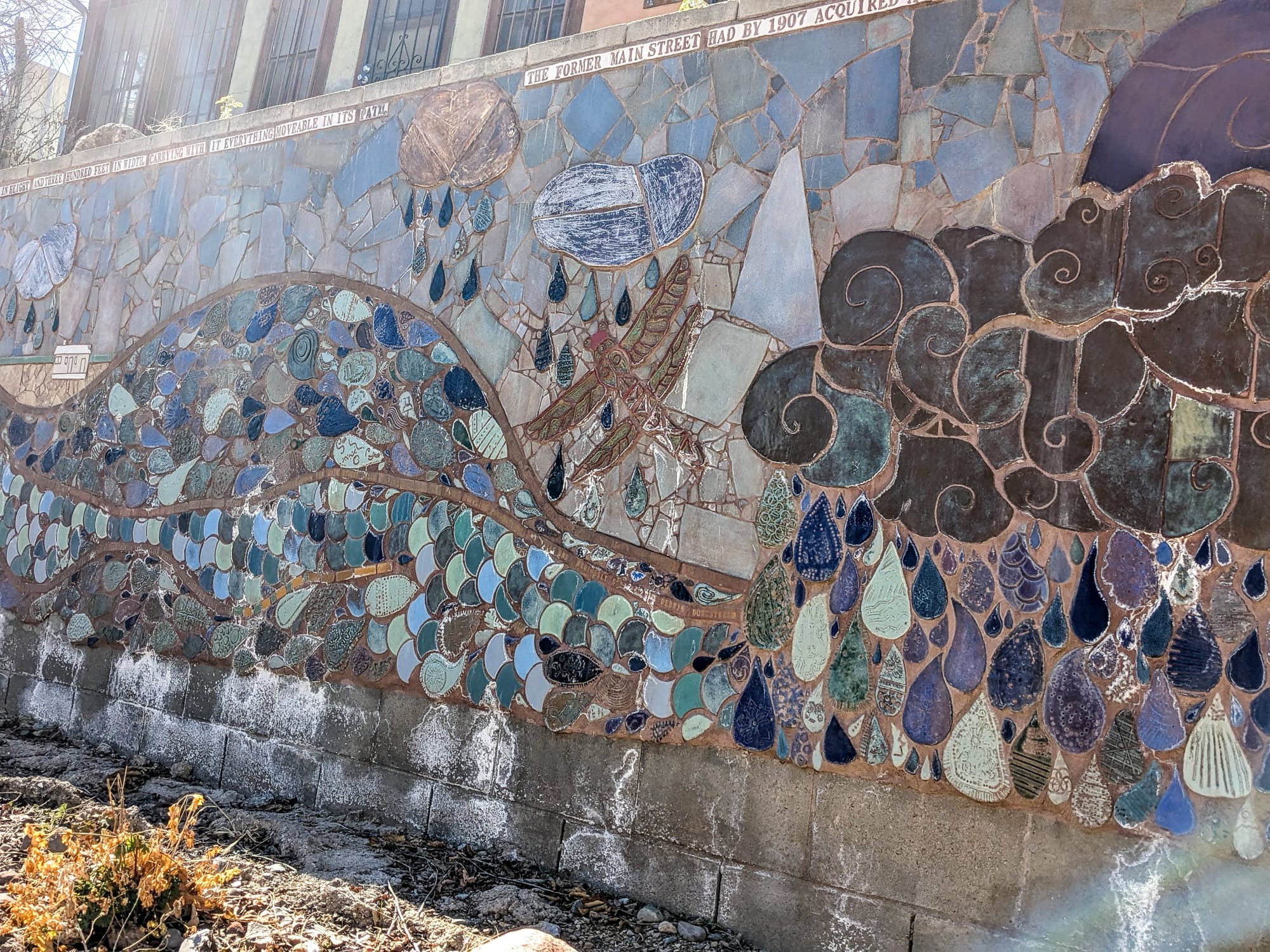
The Big Ditch in Silver City
The long and winding road into the Gila mountains is narrow but somehow surprisingly peaceful. We encountered a handful of other cars on our way in, most of them waved a friendly greeting. After reading some mixed reviews, we had initial doubts about our next camp spot, but -luckily- it would turn out to be the best decision of the whole trip. The access road to Gila Hot springs campground is steep, and many trailers would have trouble making the turn in. Fortunately, our new set up is moderate, and we managed to get the last trailer spot at this first- come- first- serve dispersed campground with three well maintained natural hot springs. As the whole campground only consists of 12 spots, (no hook-ups, if I may add), it feels private and peaceful, and you can enjoy your soak while listening to the baby goats next door and admire the beautiful sunset over the towering cliffs,(or sunrise if you are brave enough to face the early morning cold).
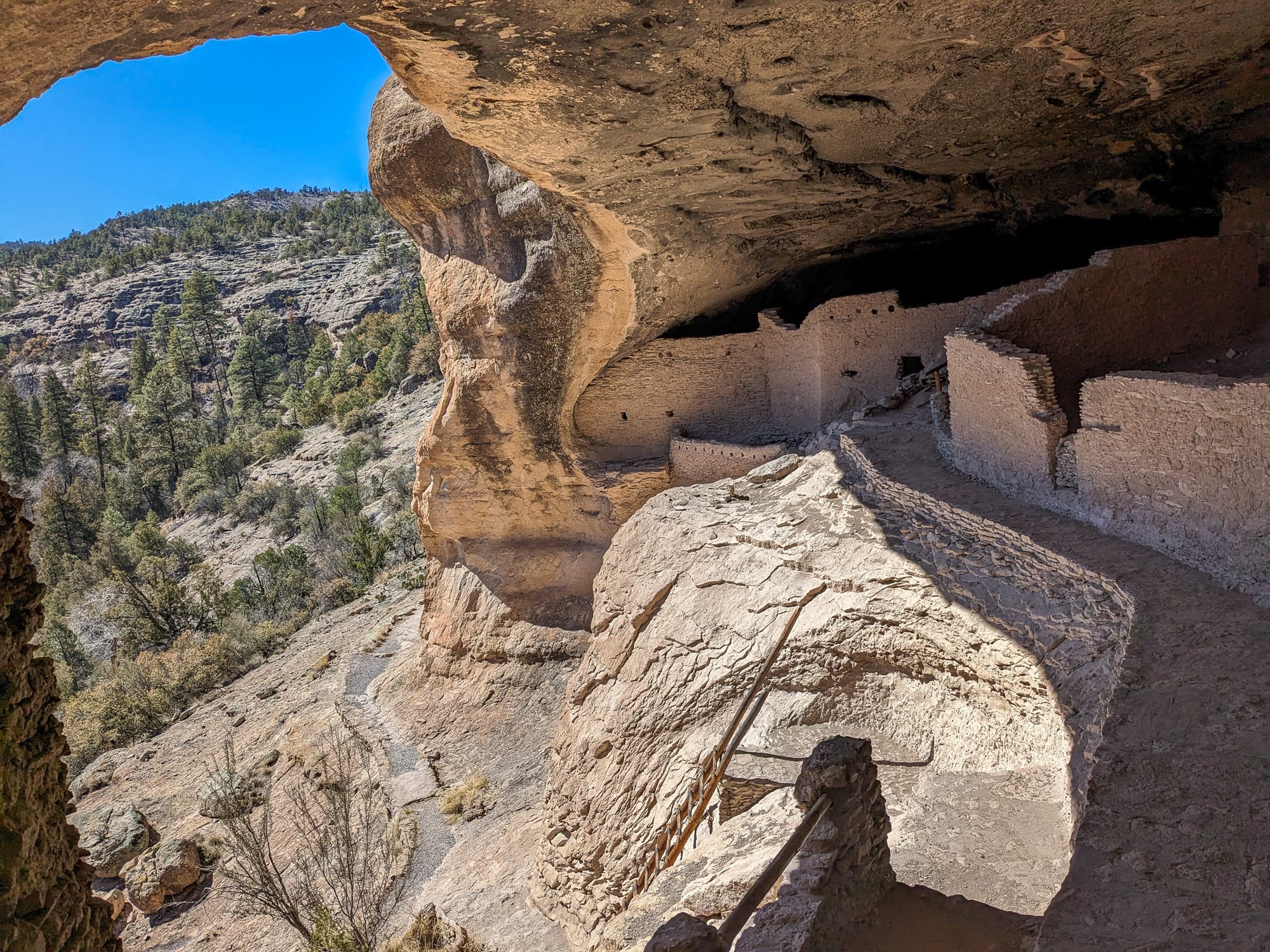
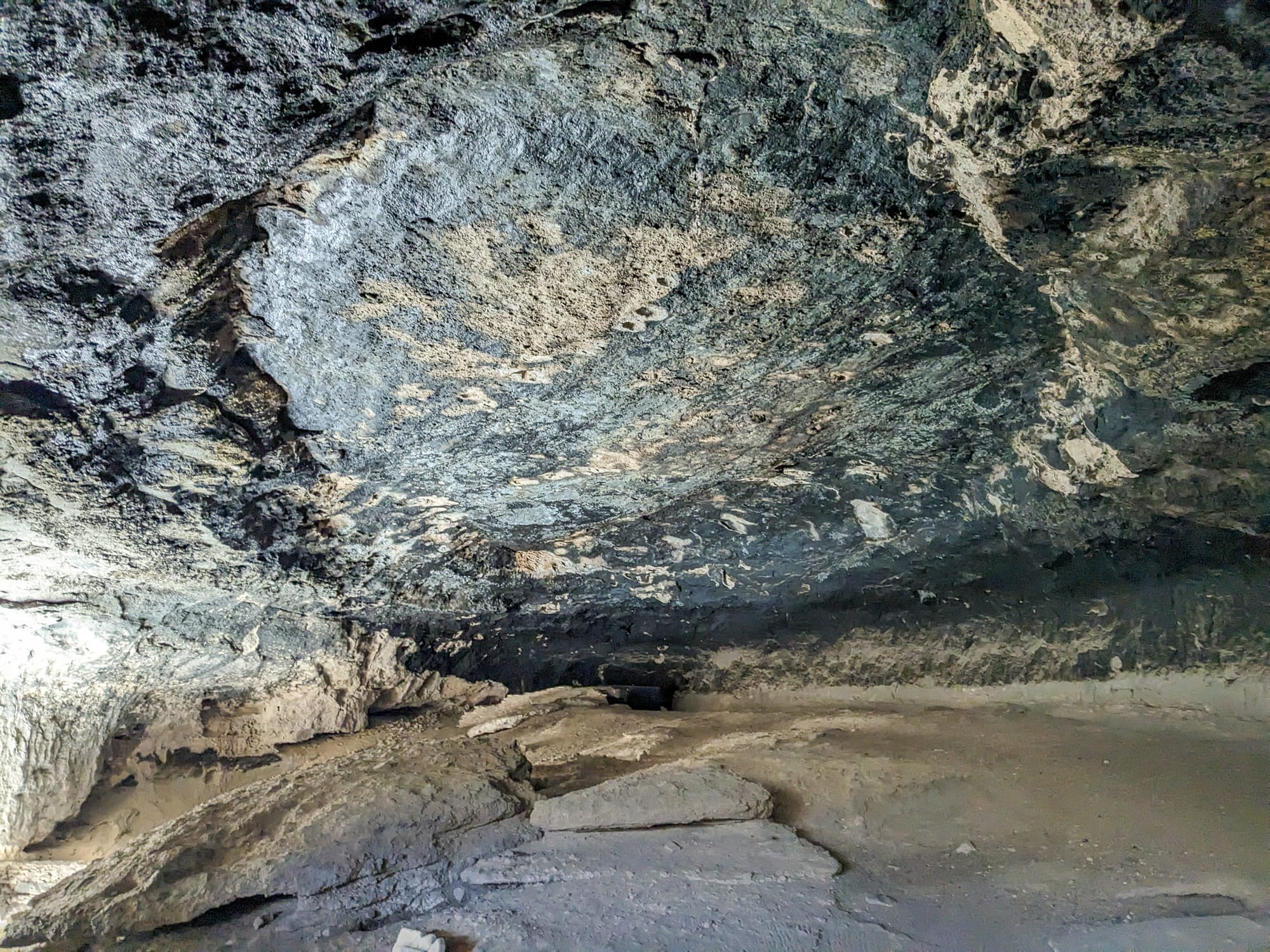
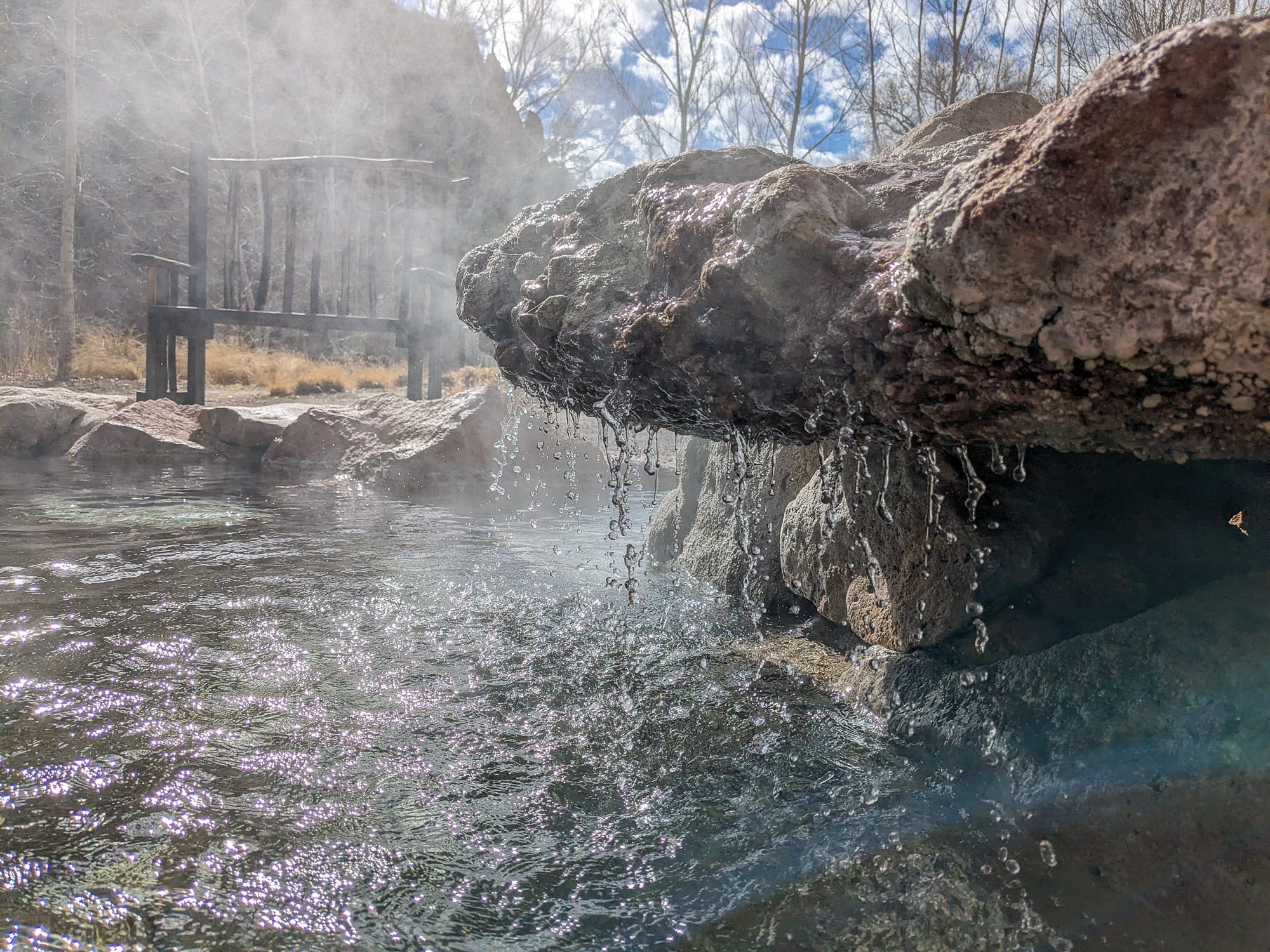
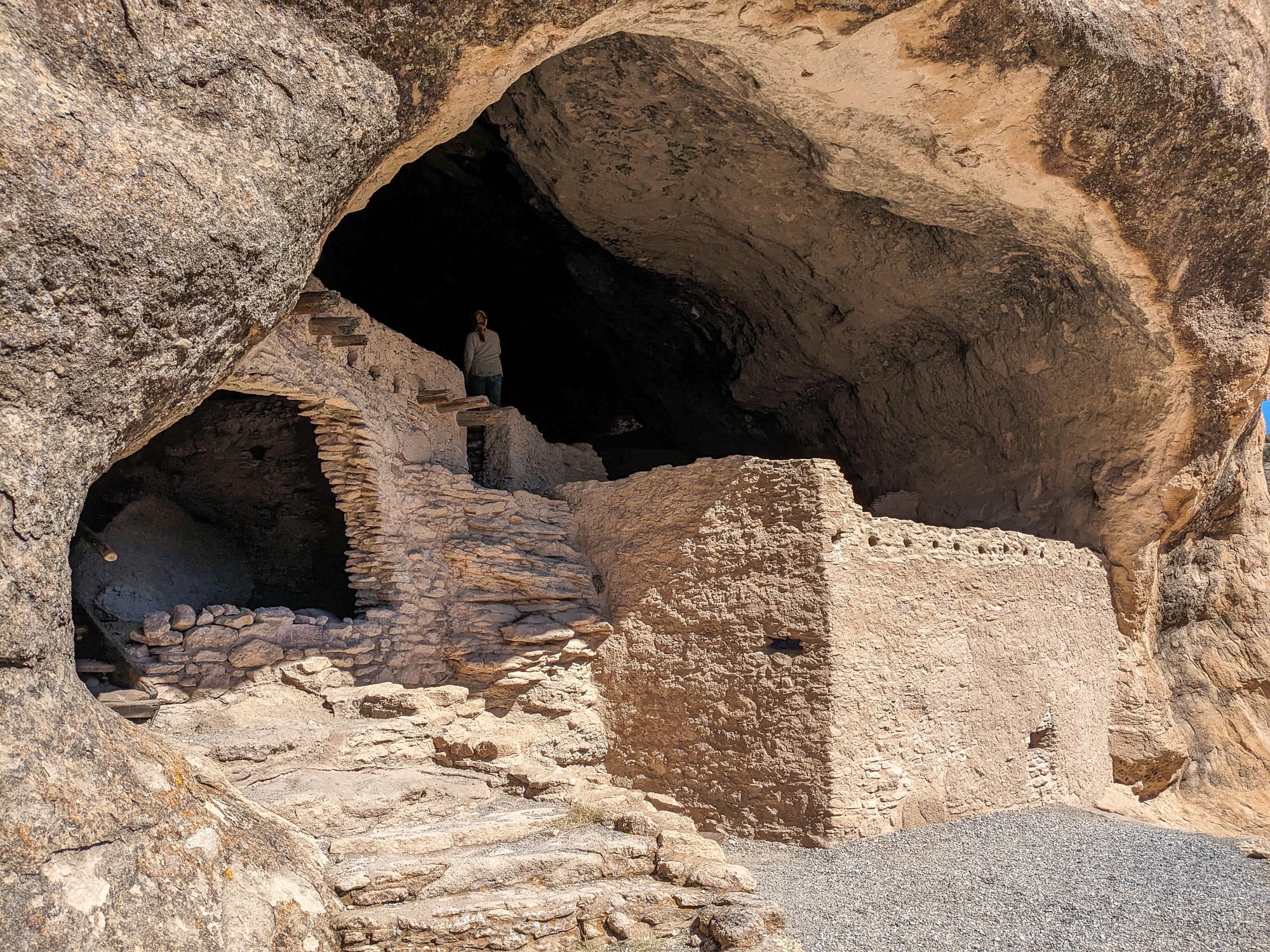
Gila Cliff Dwellings National Monument and Gila Hot Springs
The Gila Cliff Dwellings National Monument is a short drive up the dead end road. It is also the beginning of the Gila Wilderness, a large, preserved, completely unmaintained and roadless area where cougars and Mexican wolves roam side by side with white-nosed coatis and collared peccaries. Established in 1907 by Theodore Roosevelt, like so many other preservation projects in the US, the ruins of the cliff dwellings date back to the 1260's, in which the Mogollon people were believed to have built the dwellings and inhabit the area until roughly 1300.
With another night or two ahead of us, we decided to take the long way home and get off the beaten path, quite literally. We passed through the somewhat unknown town of Chloride, a former mining town and now renewed ghost town with 13 permanent inhabitants. The rough and washed out dirt road into Chloride canyon was quite an adventure. One of those where you're not sure if this was a bad idea and whether you might get stuck or not. We also noticed the federal mining claim posted along the 'road' and even saw something that looked like a possible mining shaft.
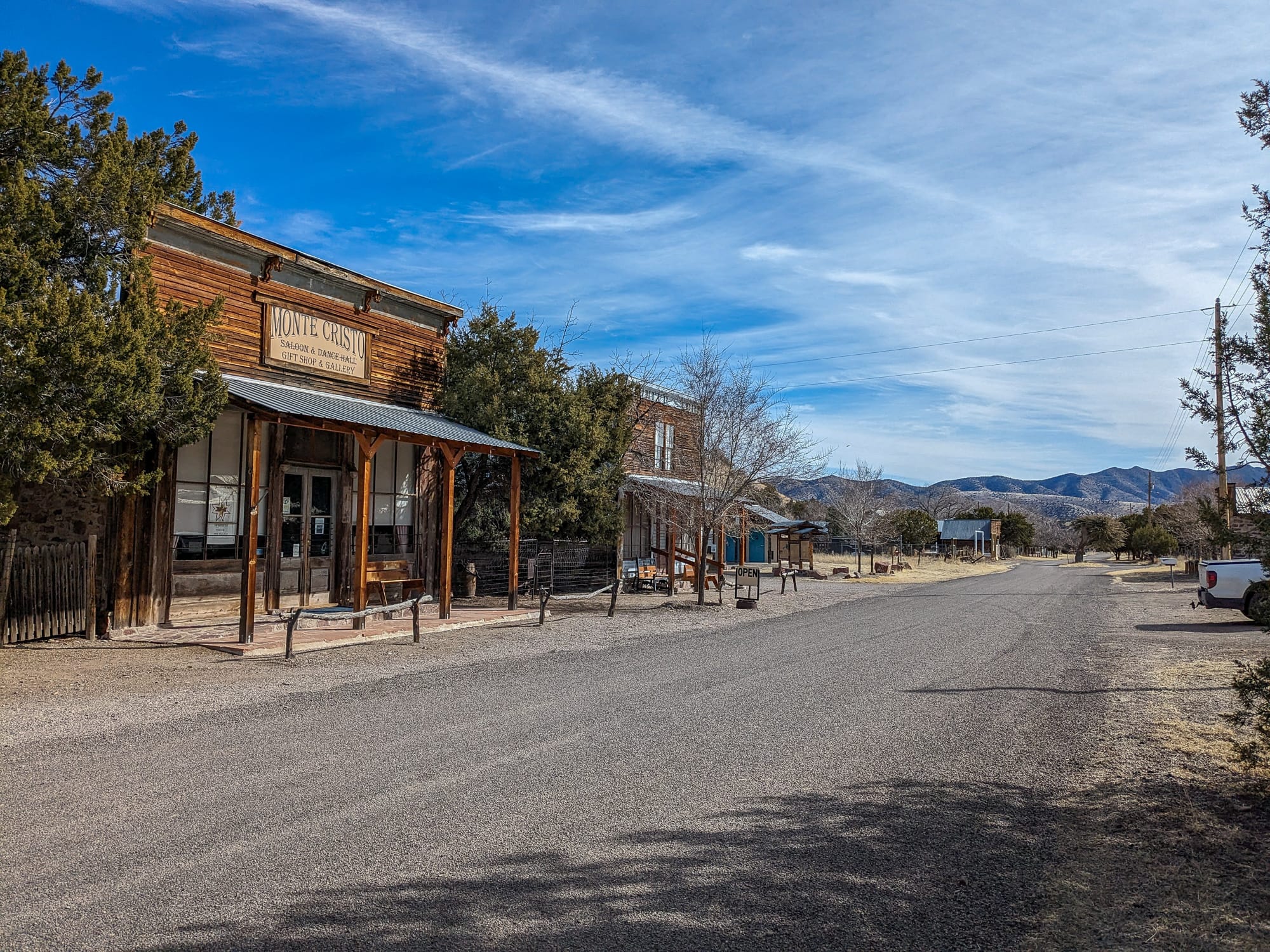
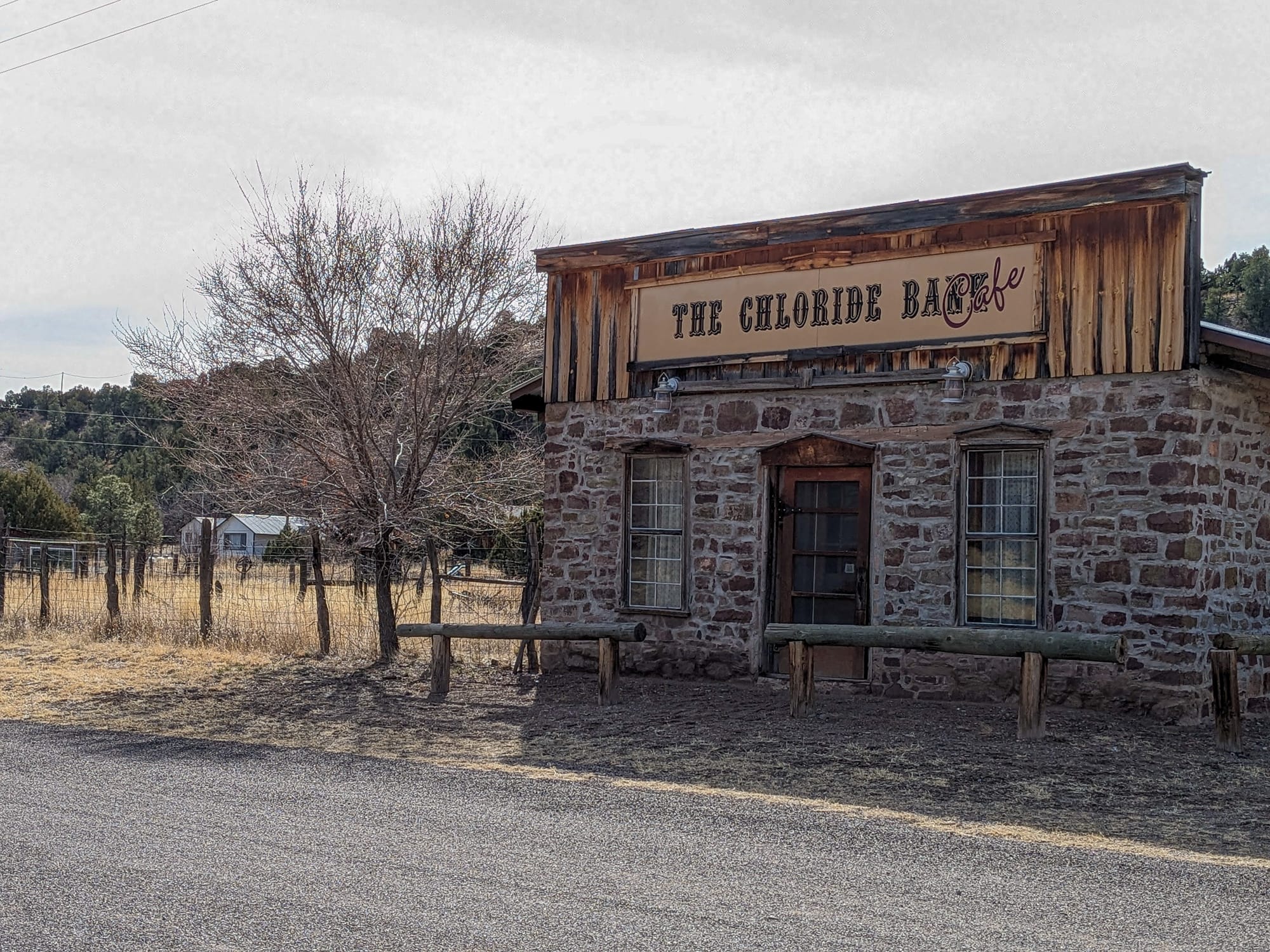
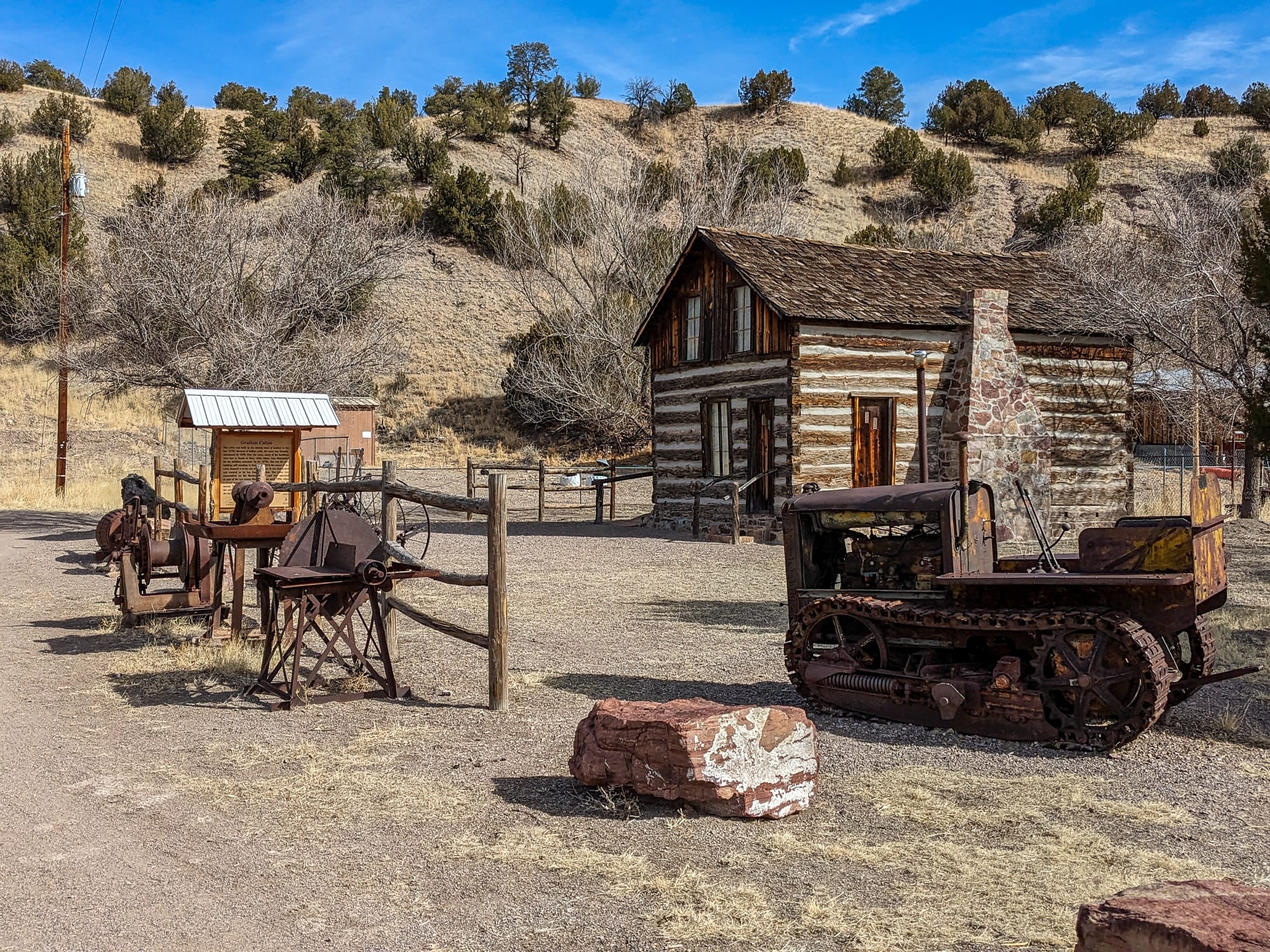
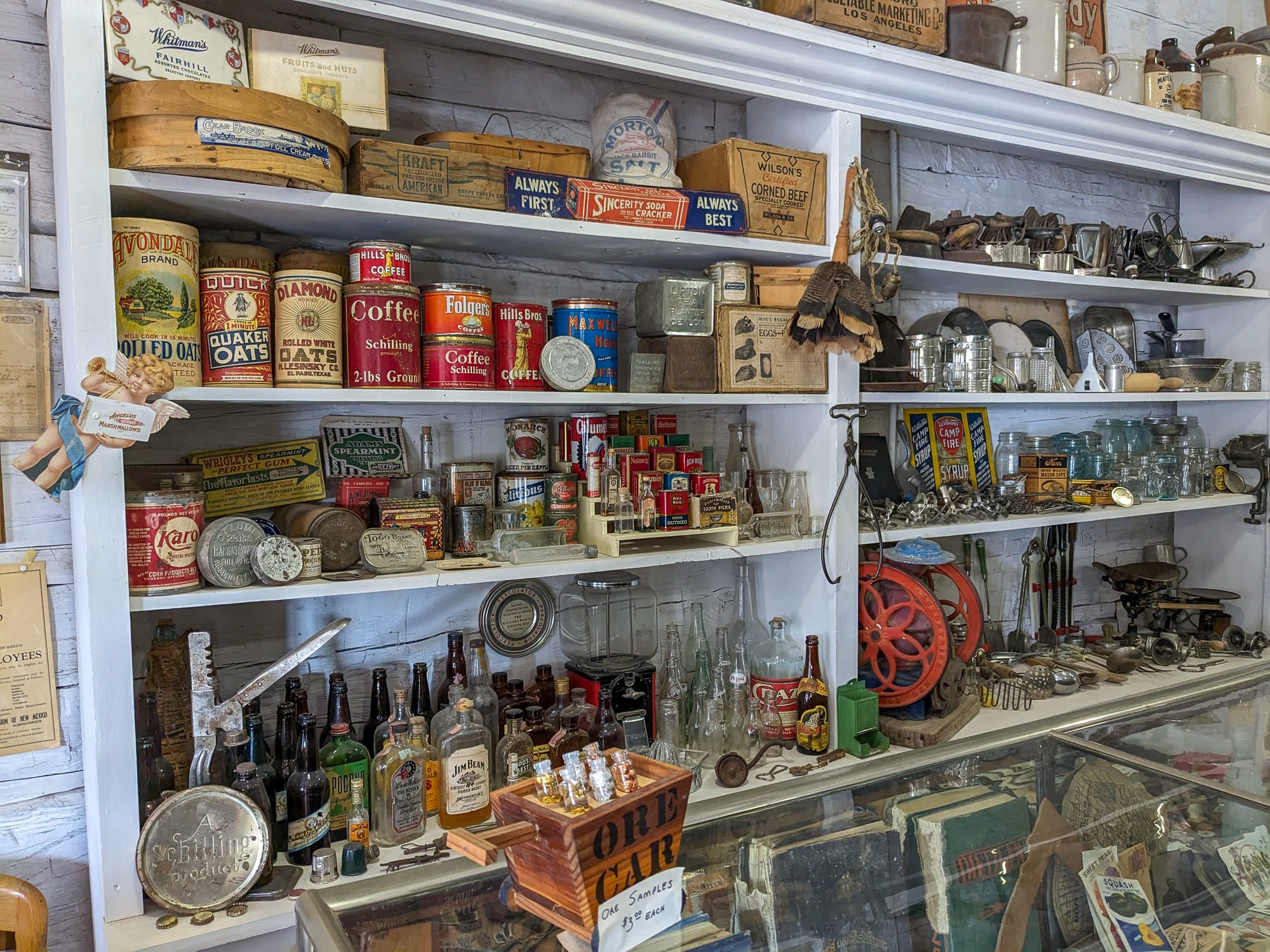
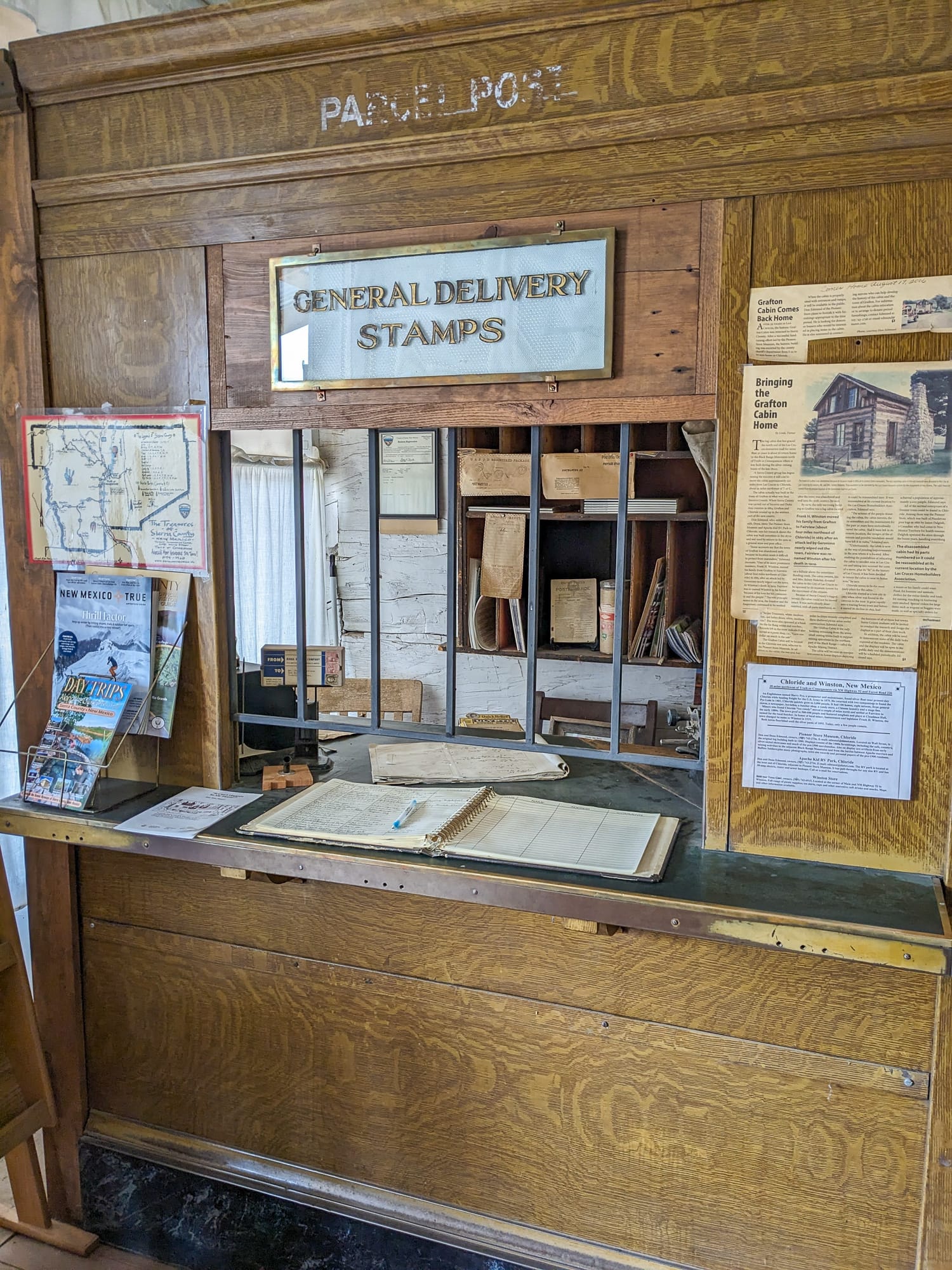
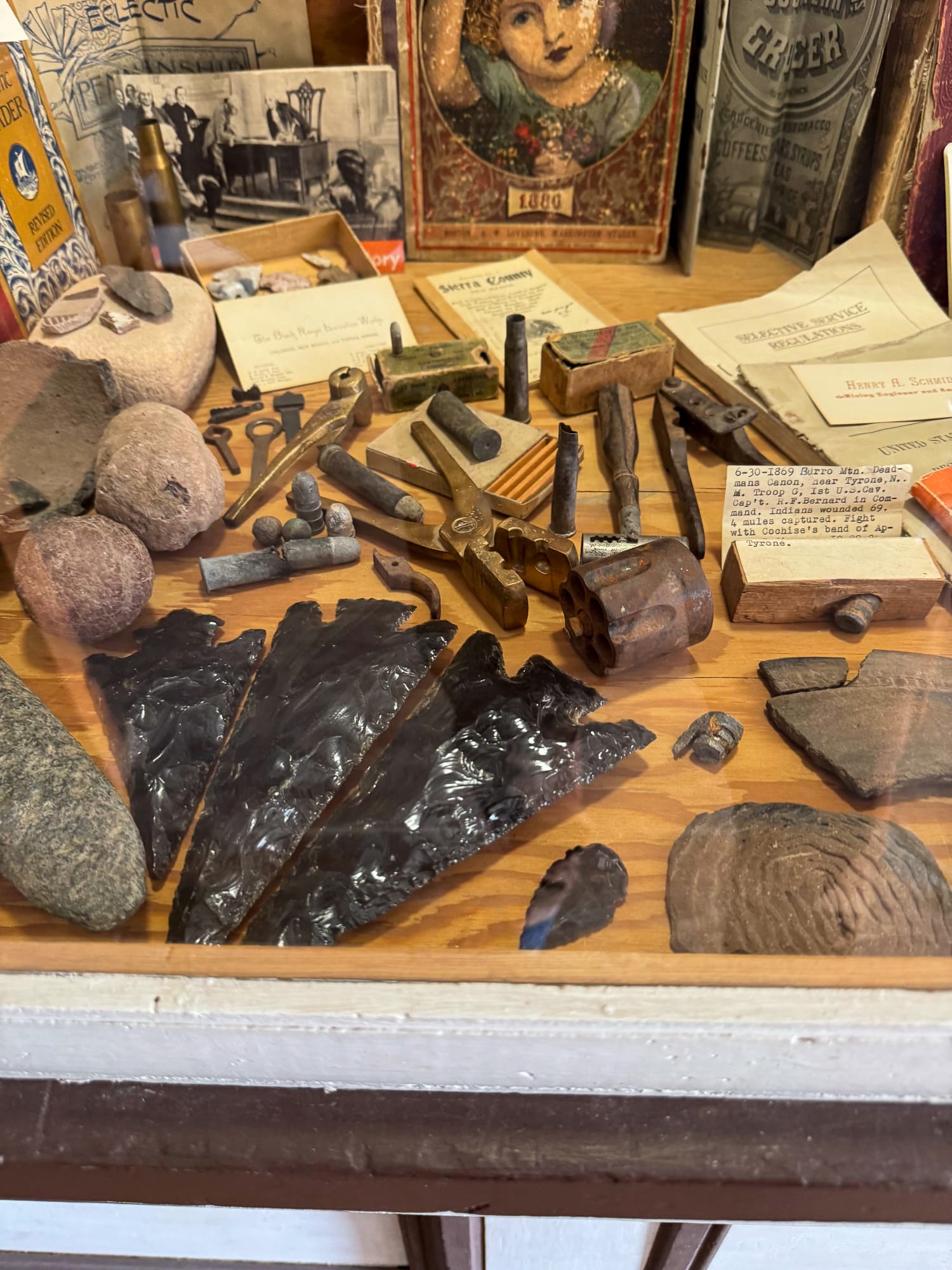
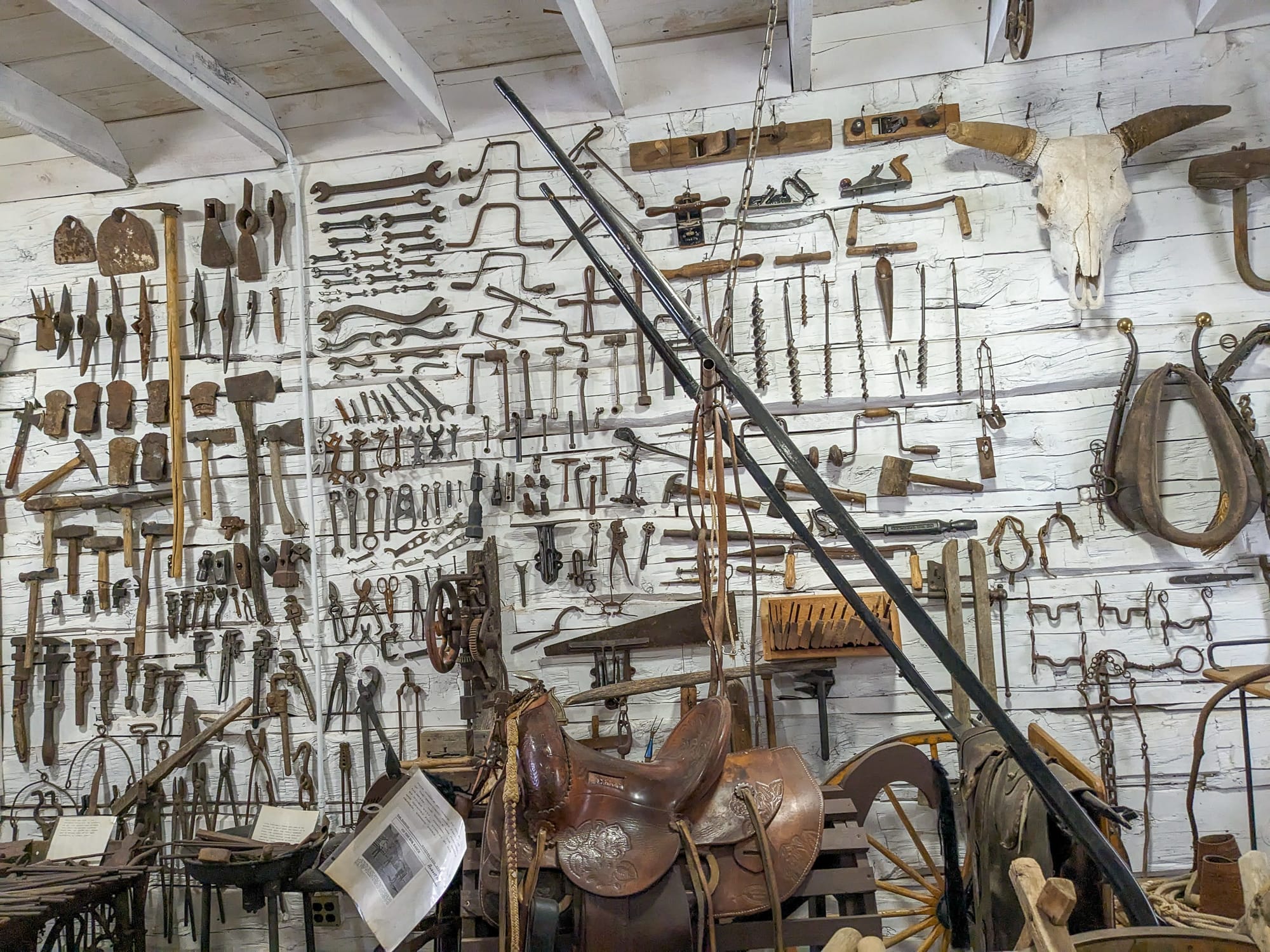
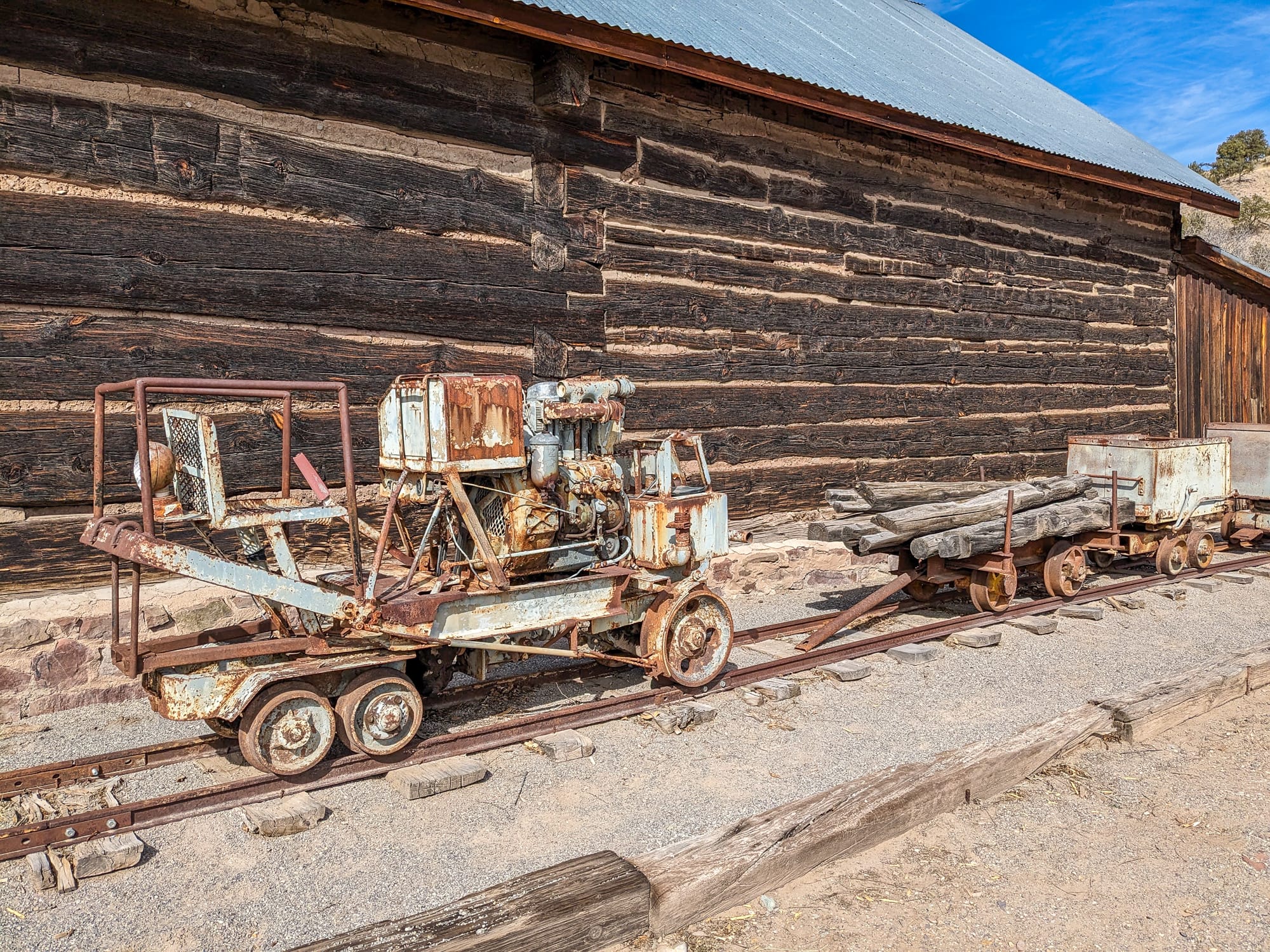
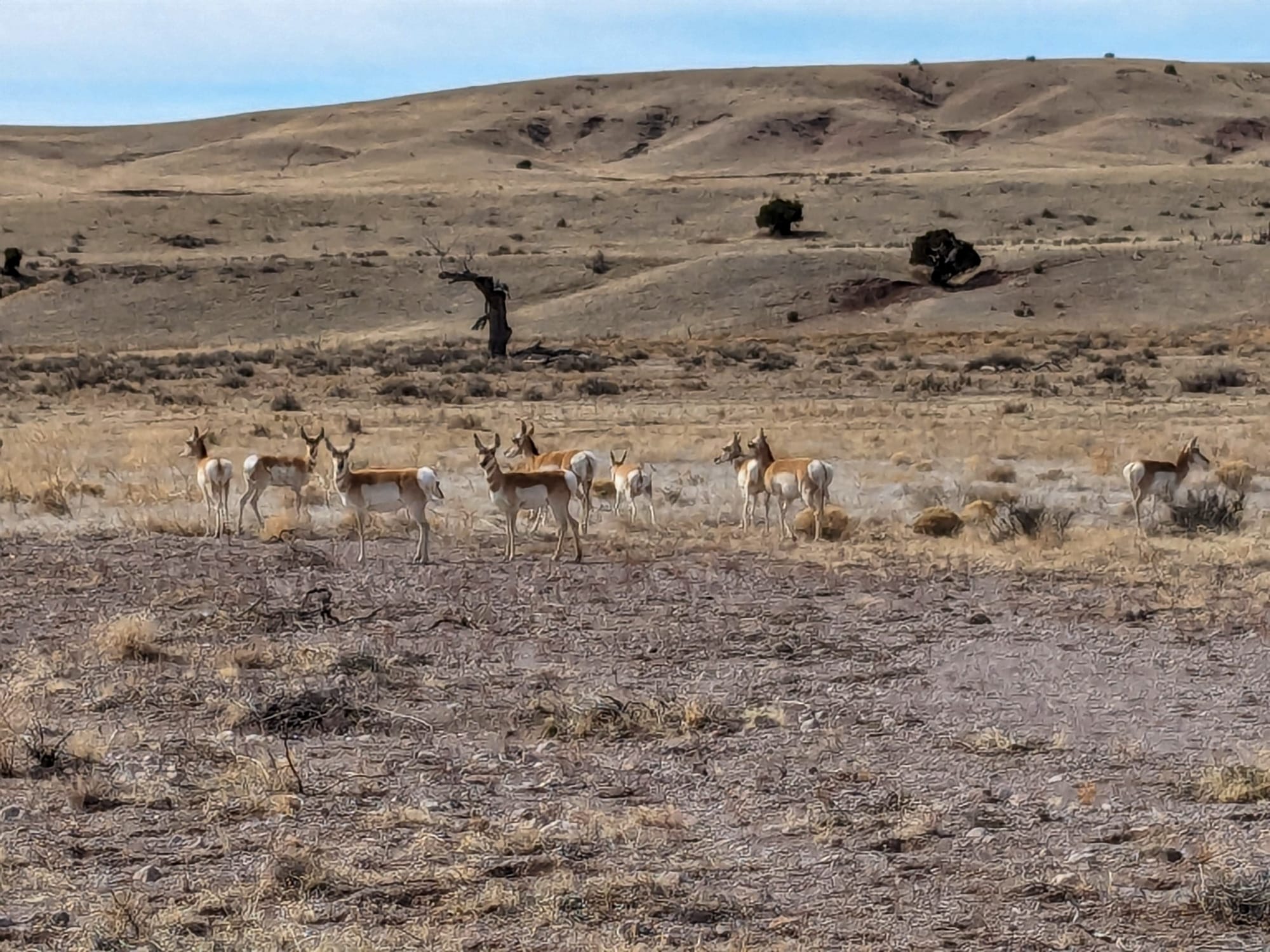
Town of Chloride and the restored post office/general store as a museum. 80 percent of the contents are original
The next morning, after a night and a hike in the desolate canyon, we paid a visit to the local store and museum. The town of Chloride was founded in the late 1870s by Harry Pye, an Englishman who, like many other discoverers of gold and silver mines, accidentally came across some promising looking rocks, or 'floats' that had been washed down from higher elevation. After having the rocks assayed, he discovered that they contained Silver Chloride- hence the name of the town. Like Cooney, he kept his findings a secret until his contract with the army was finished and, after partnering up with some newcomer prospectors from Kansas, he built a log cabin that would be the start of a larger tent city and eventually become the town of Chloride. Pye's mining endeavor did not last very long, and like Cooney, he was soon killed by a local Apache tribe. However, word had gotten out, and within the year of his death the town kept growing fast, with a population of more than 2000 in the 1890s. Many of the original buildings are still preserved. The former post office and general store was bought up by a family that restored the building and turned it into a glimpse into the past of silver rush mining towns. History buffs might be interested in the still functioning scale, the impressive safe, or the collection of preserved tools from back in the day. The former dance hall and saloon now hosts a gift shop and art gallery. The little town is worth a visit, and if you like off roading and bush whacking, there are endless acres of wilderness to explore along the NM Backcountry Discovery Route.
Stay tuned for this summer's upcoming West coast trip and maybe even Canada and Alaska, if Hannah's Green card comes through in time.

